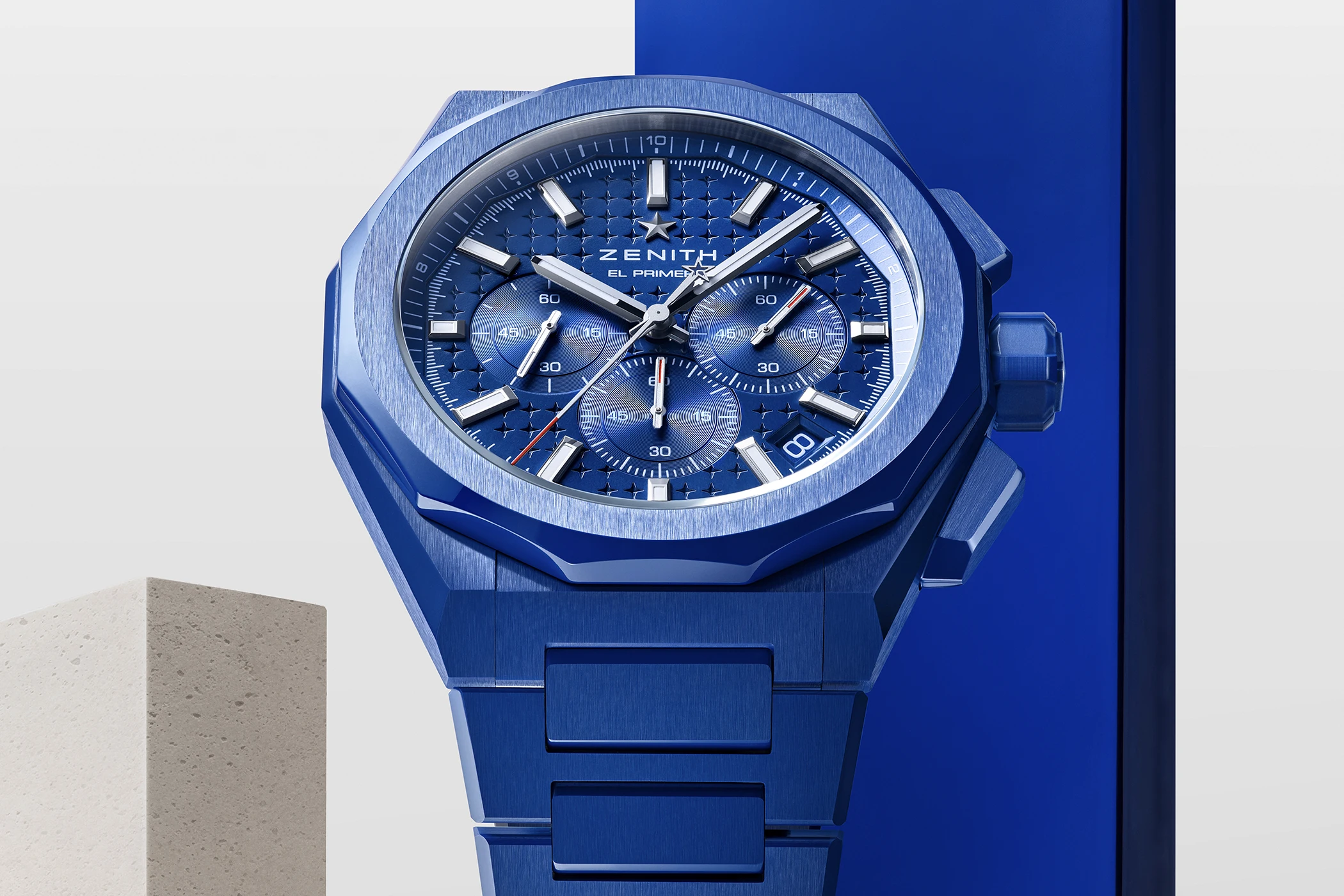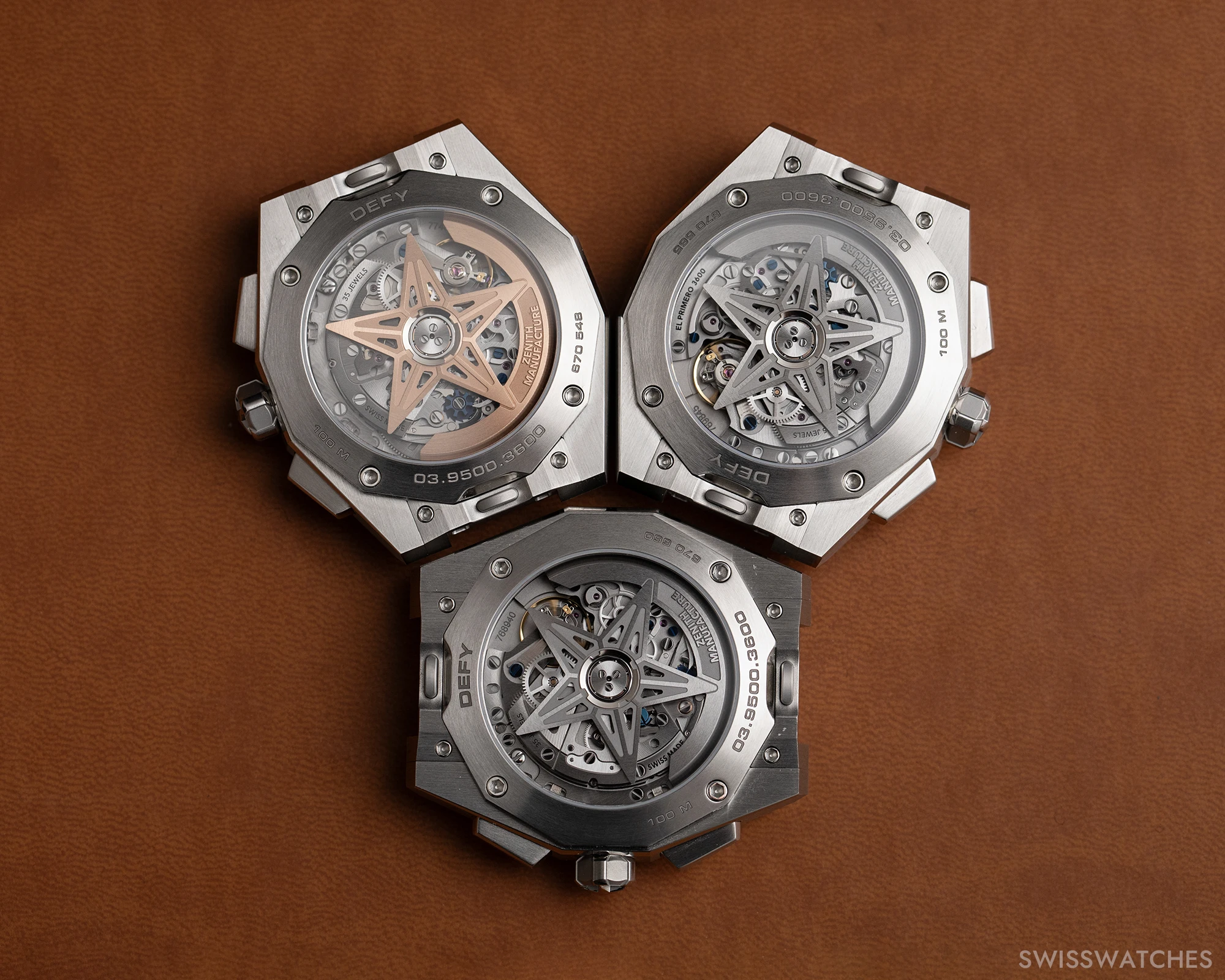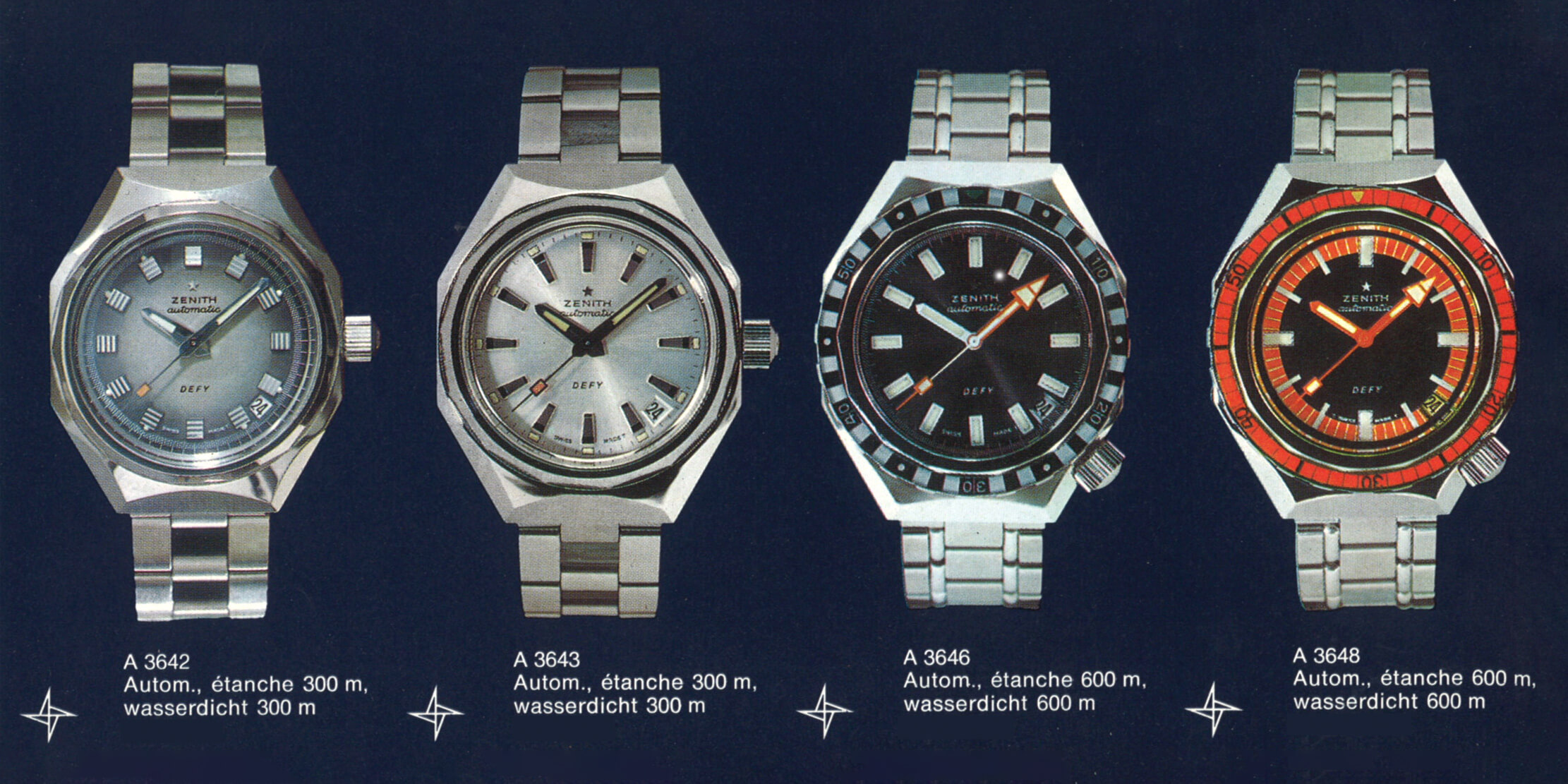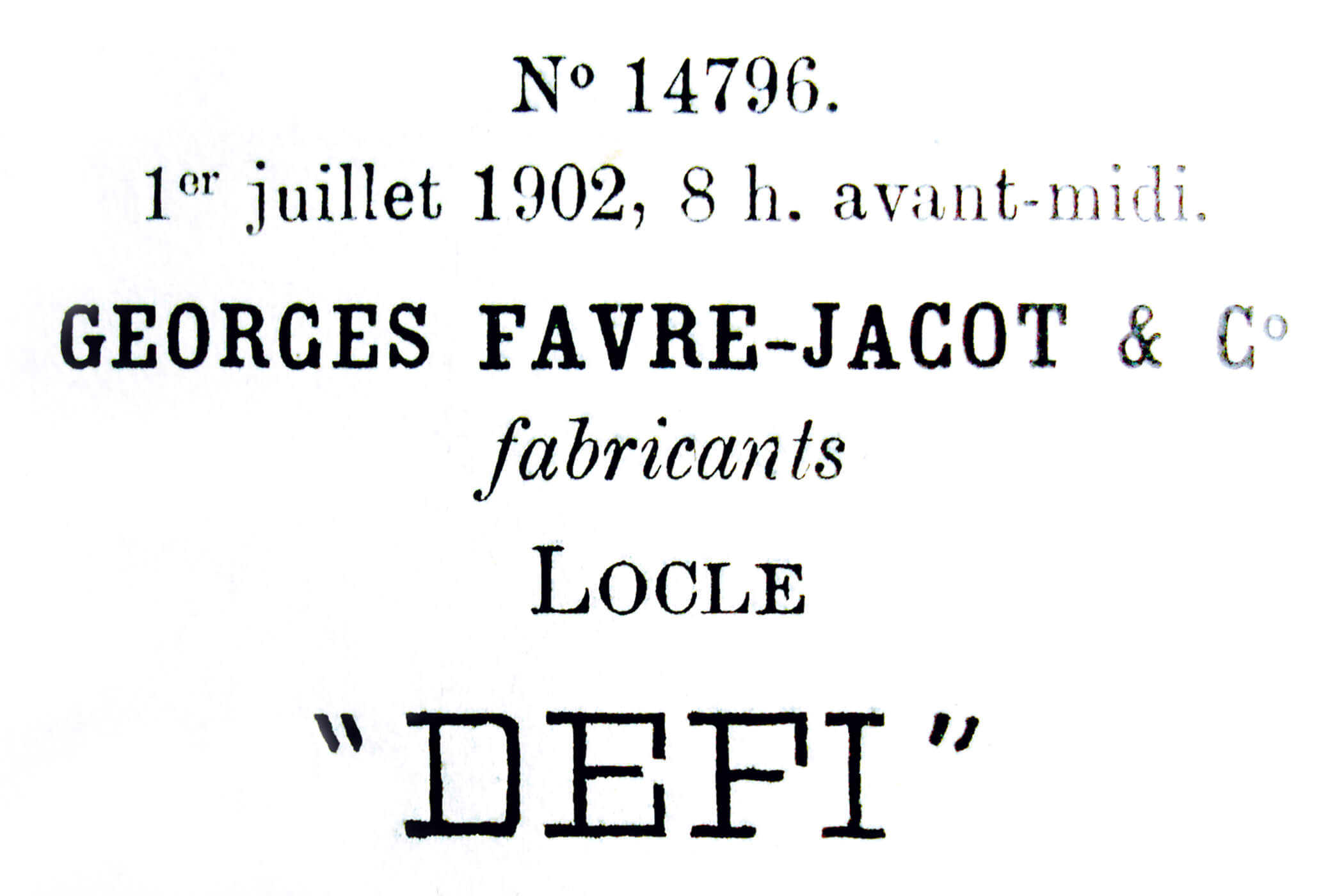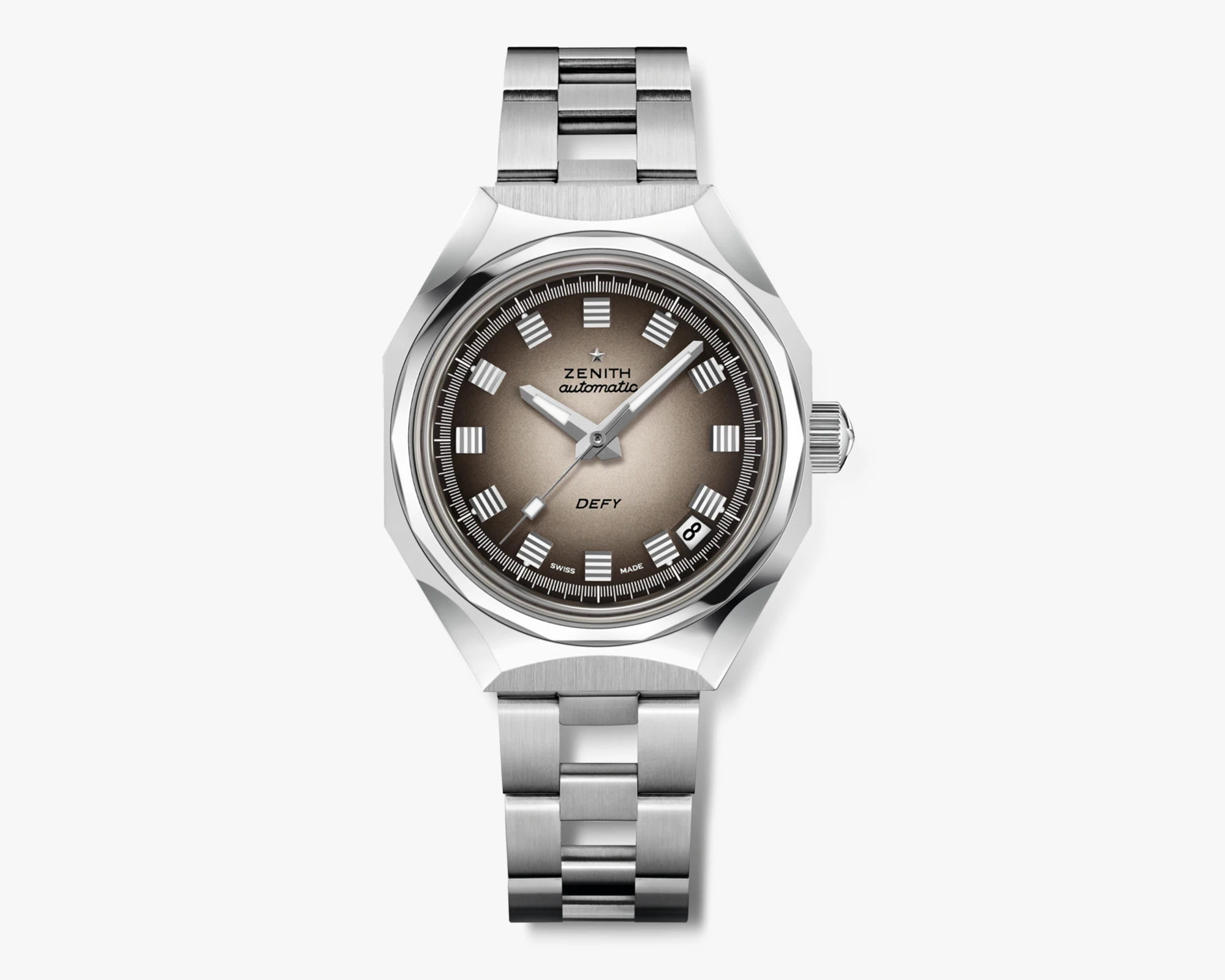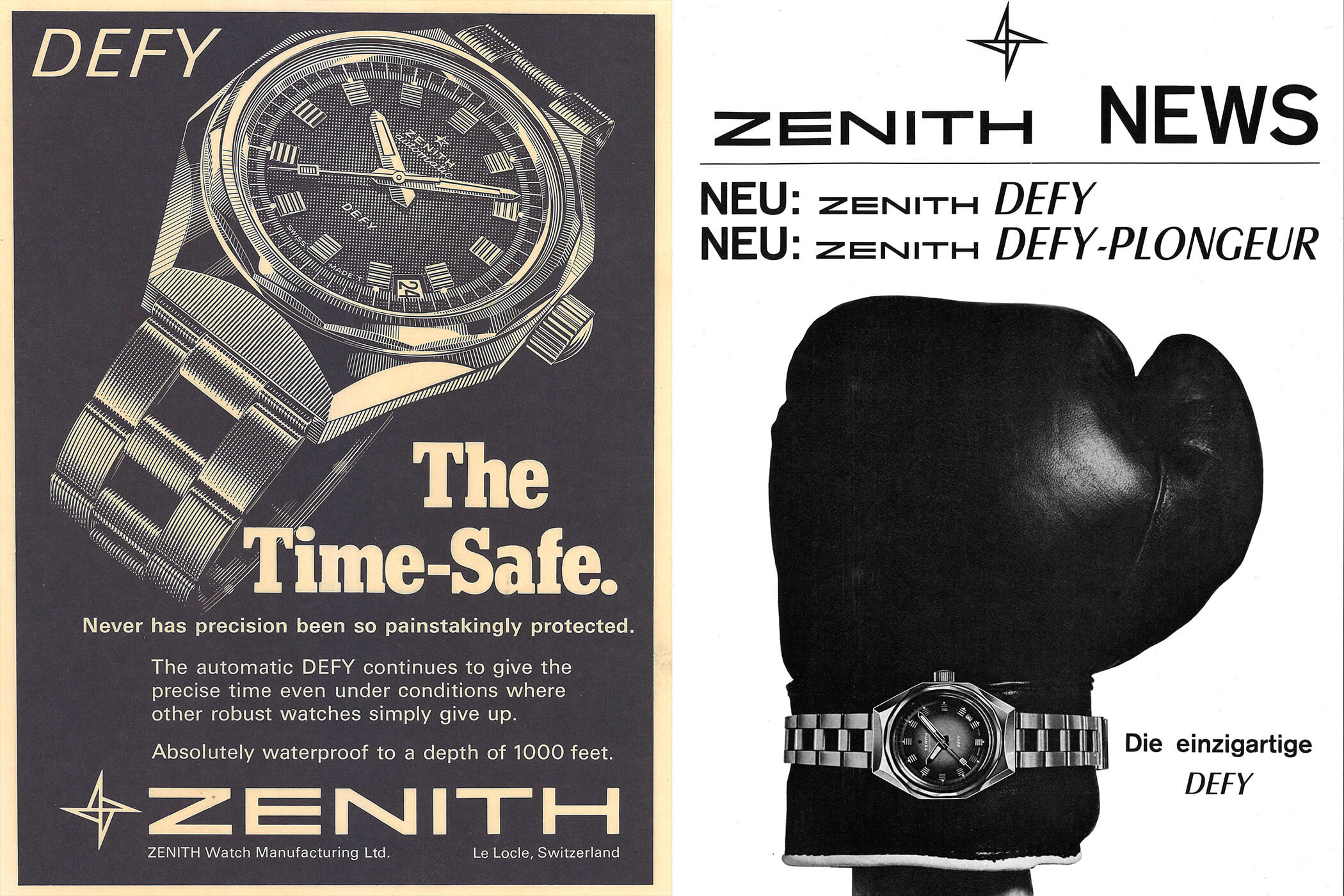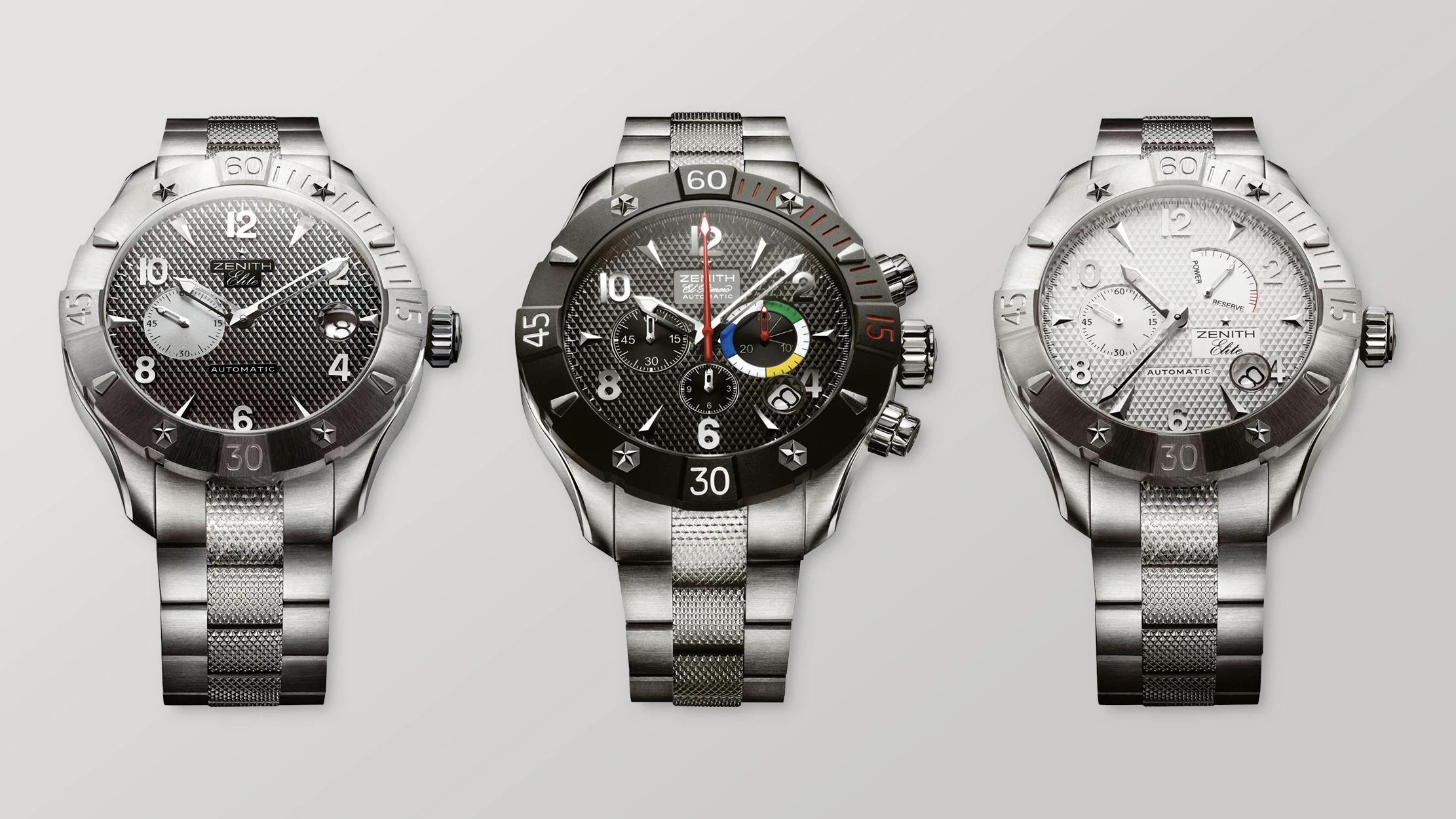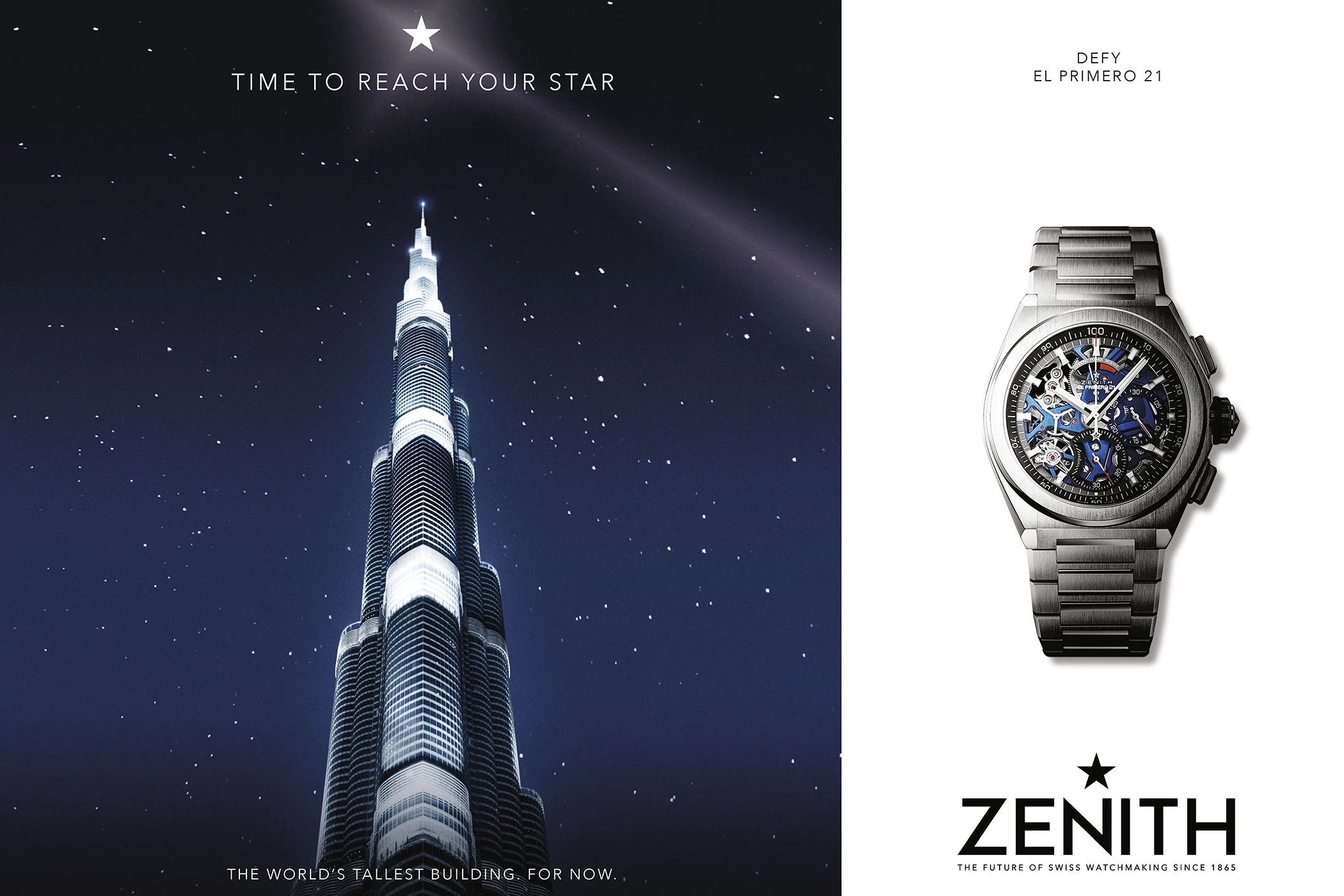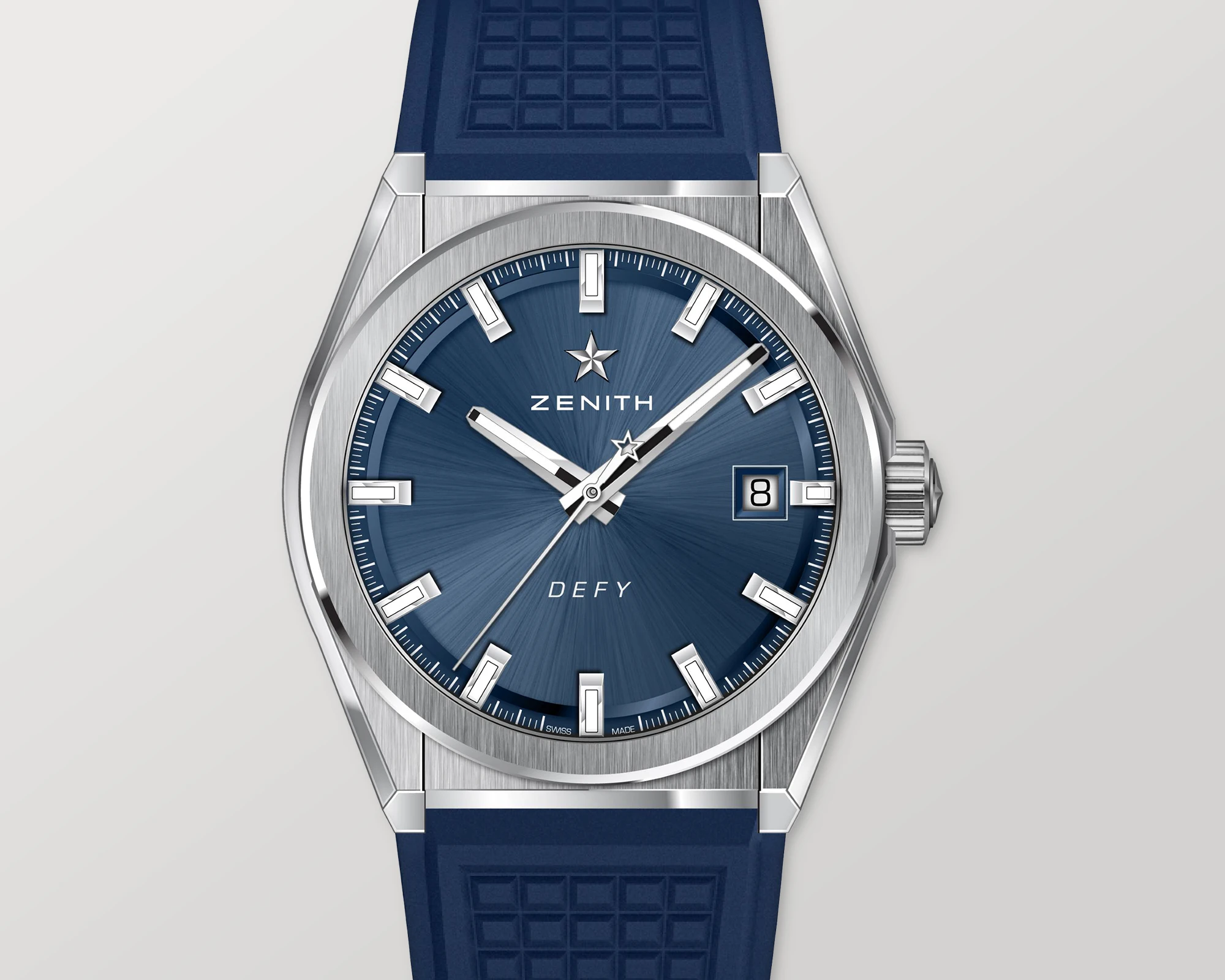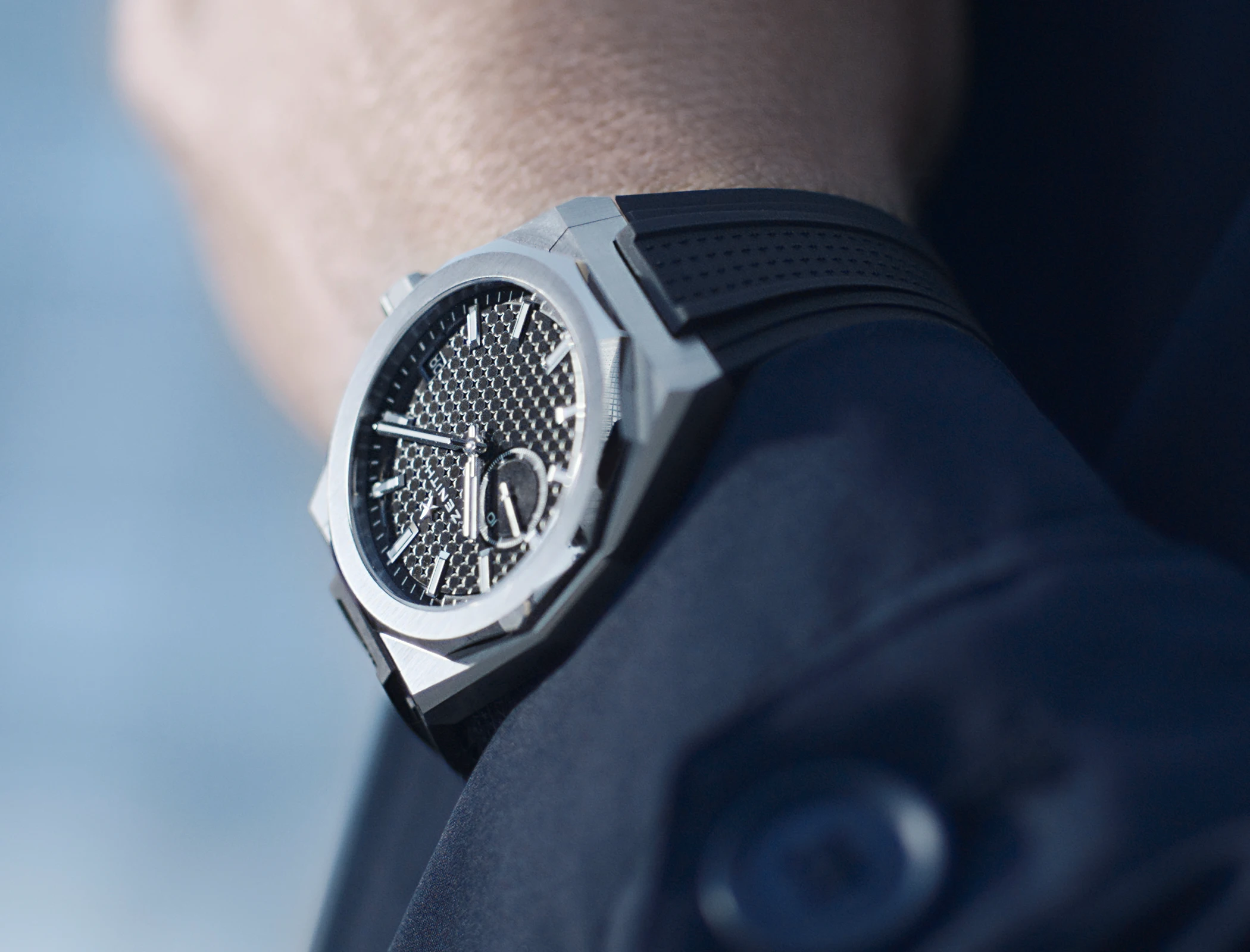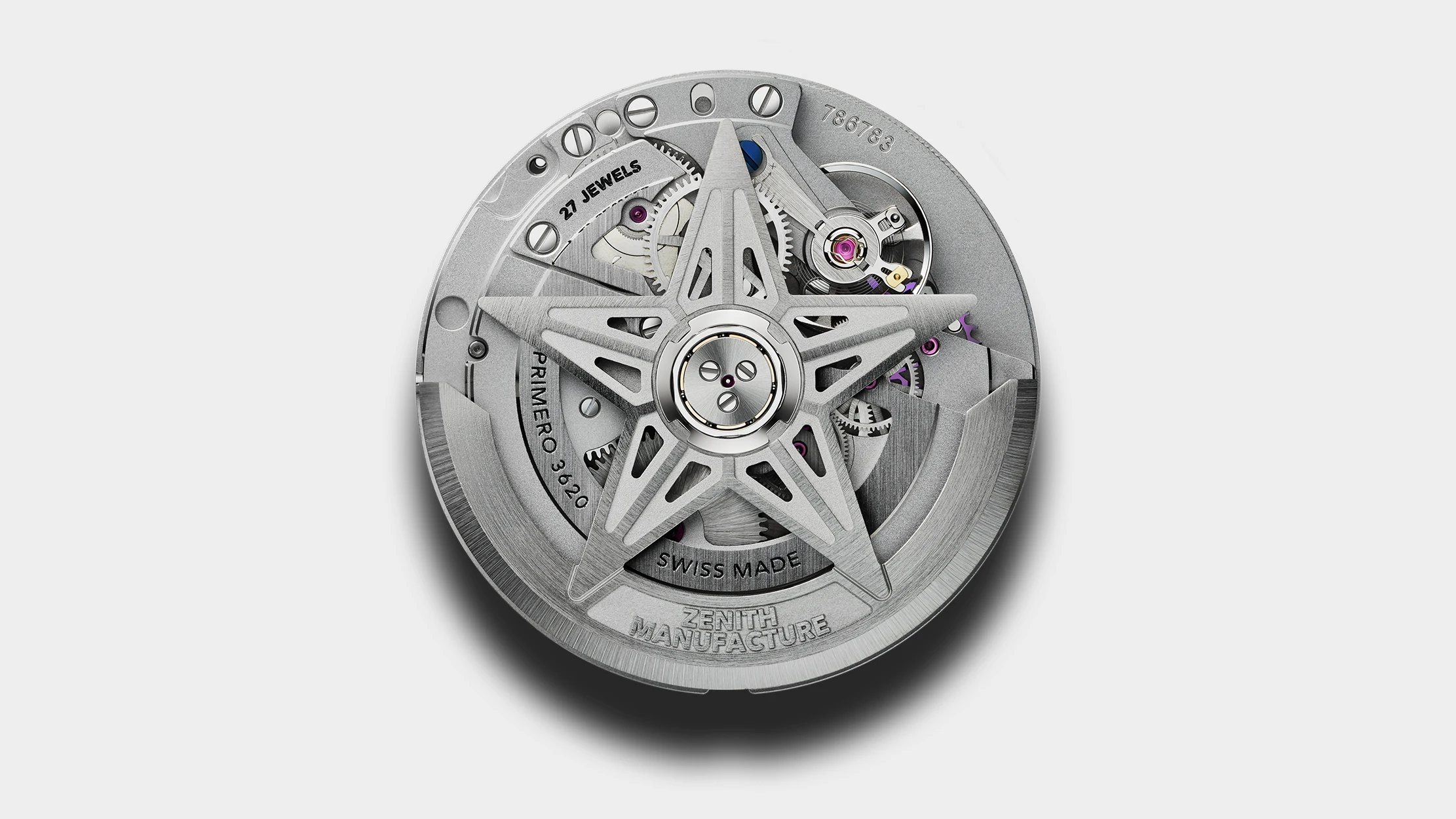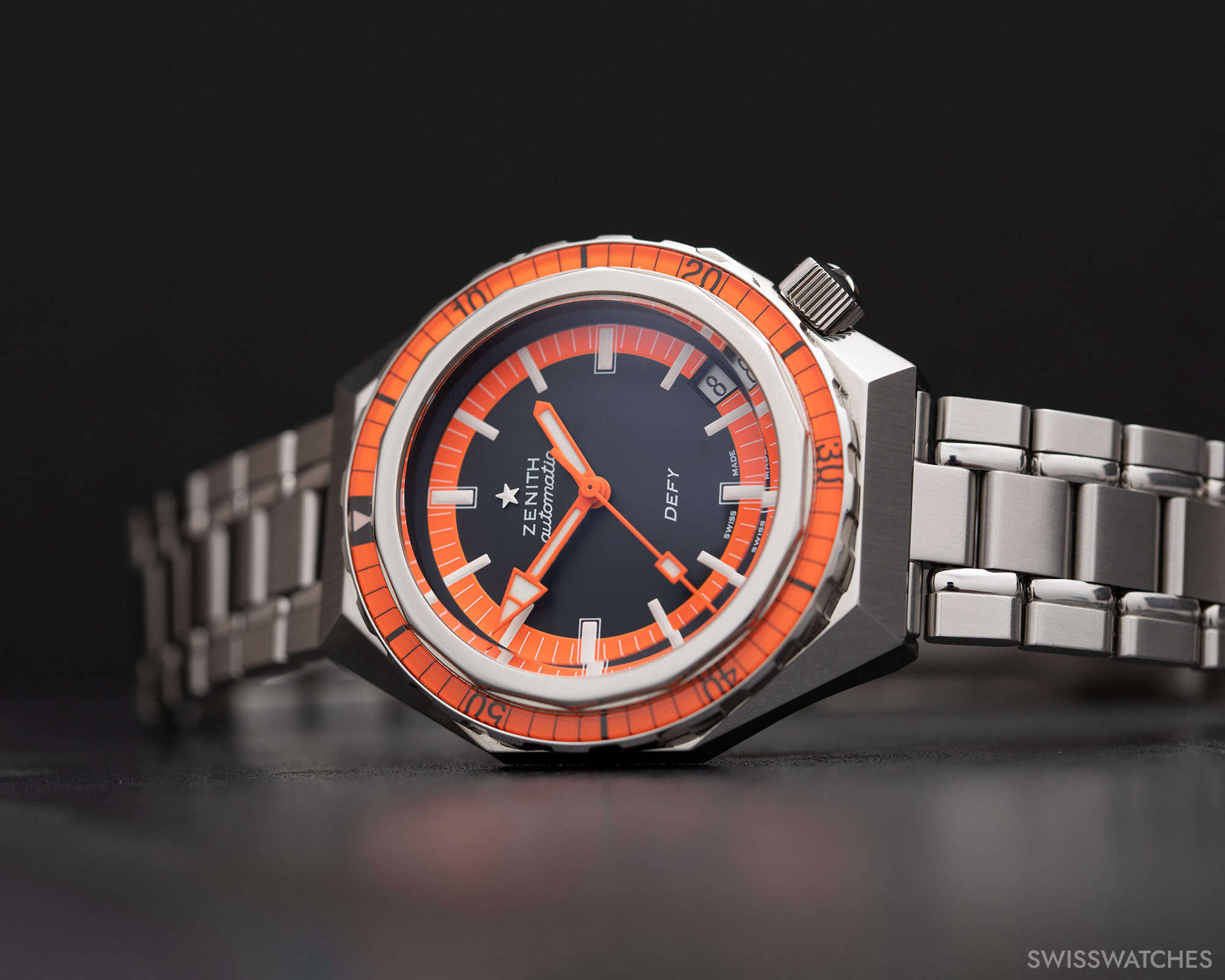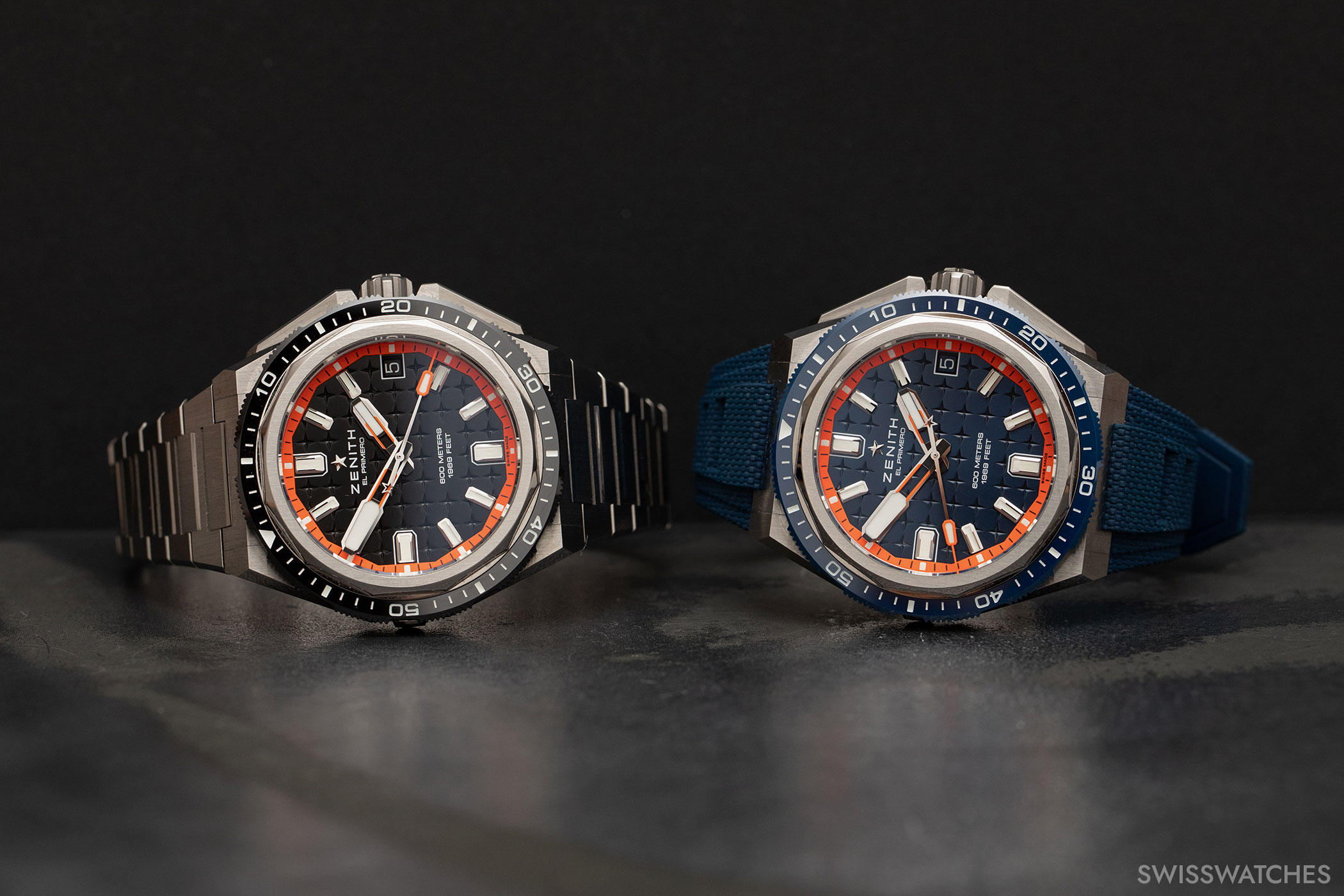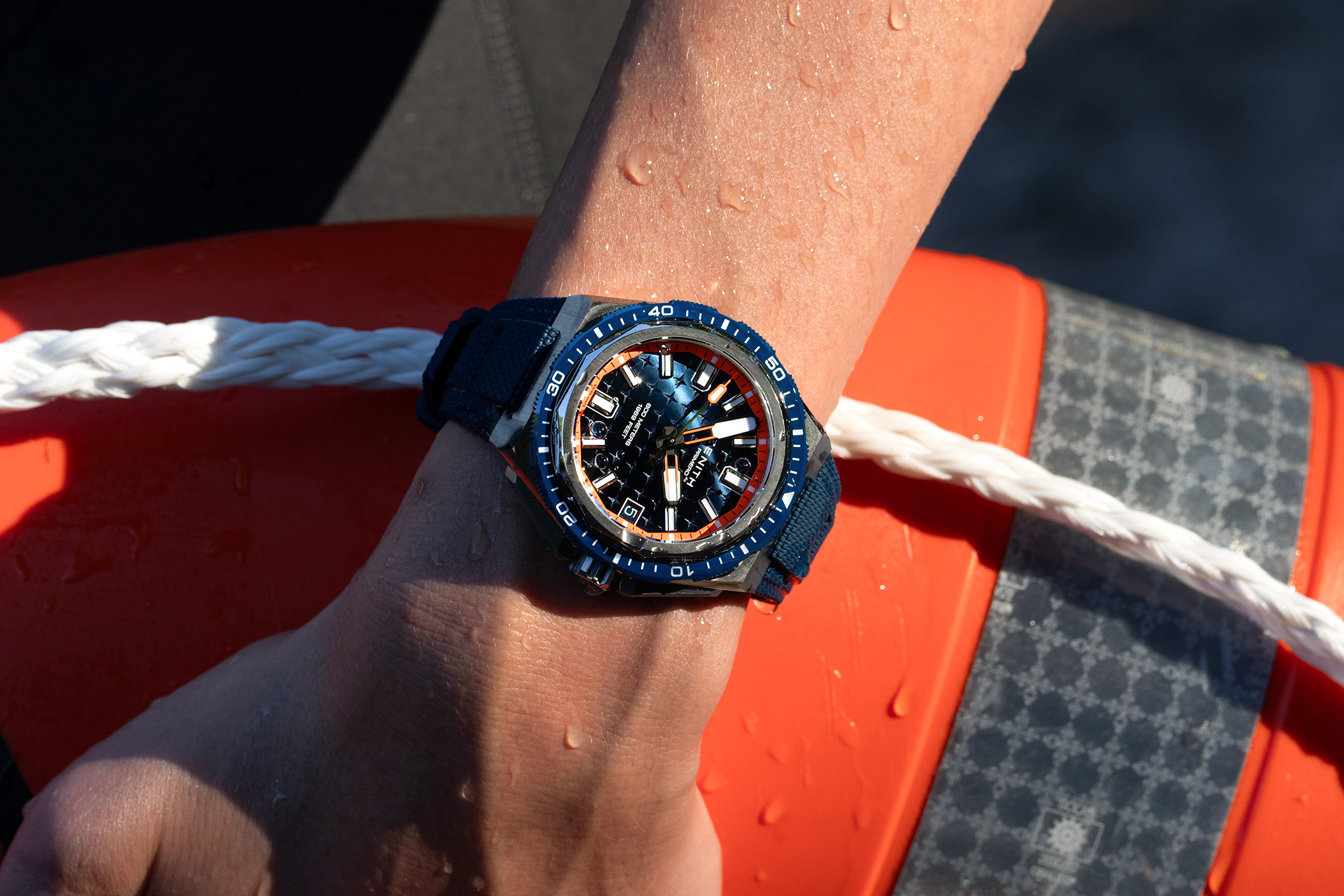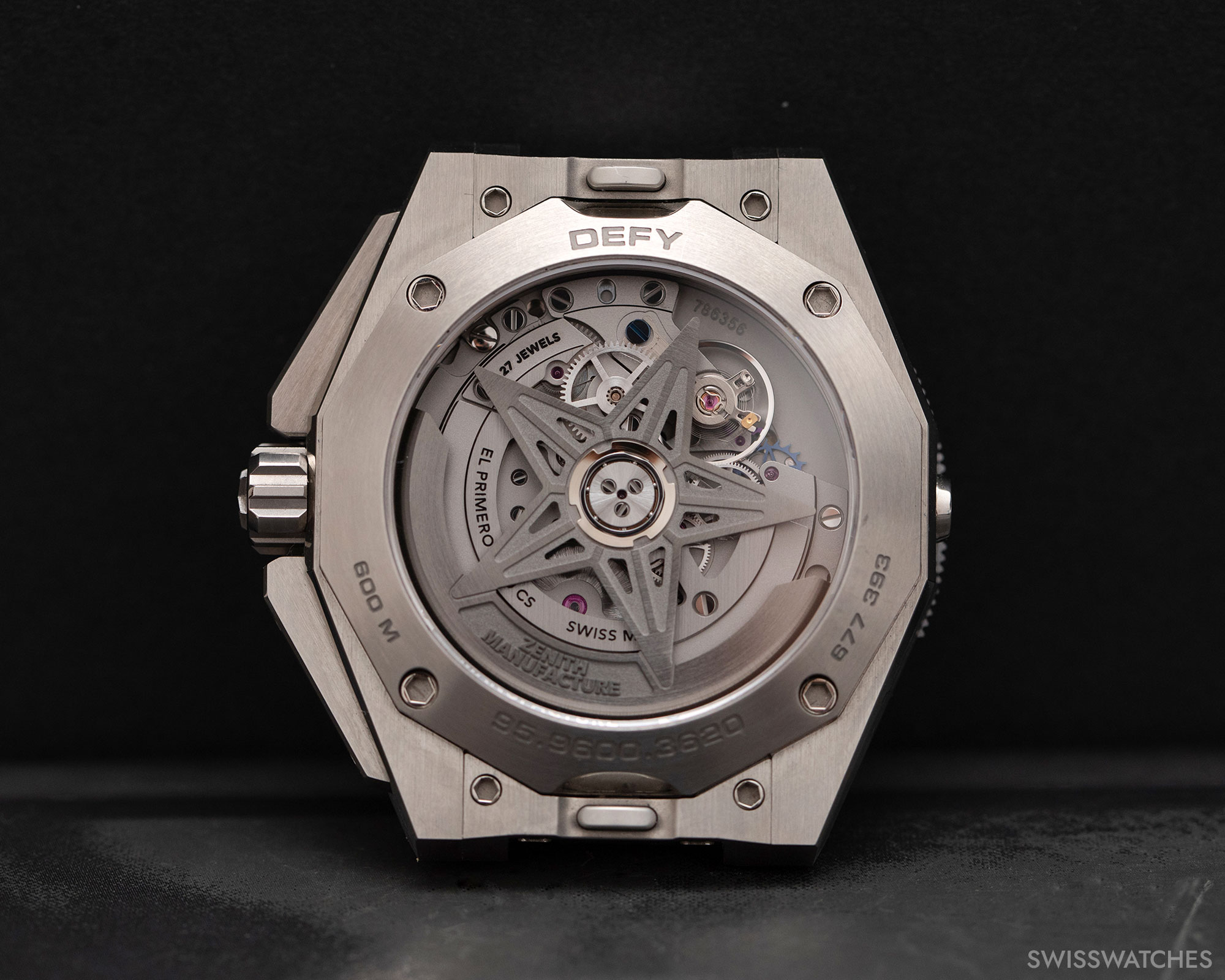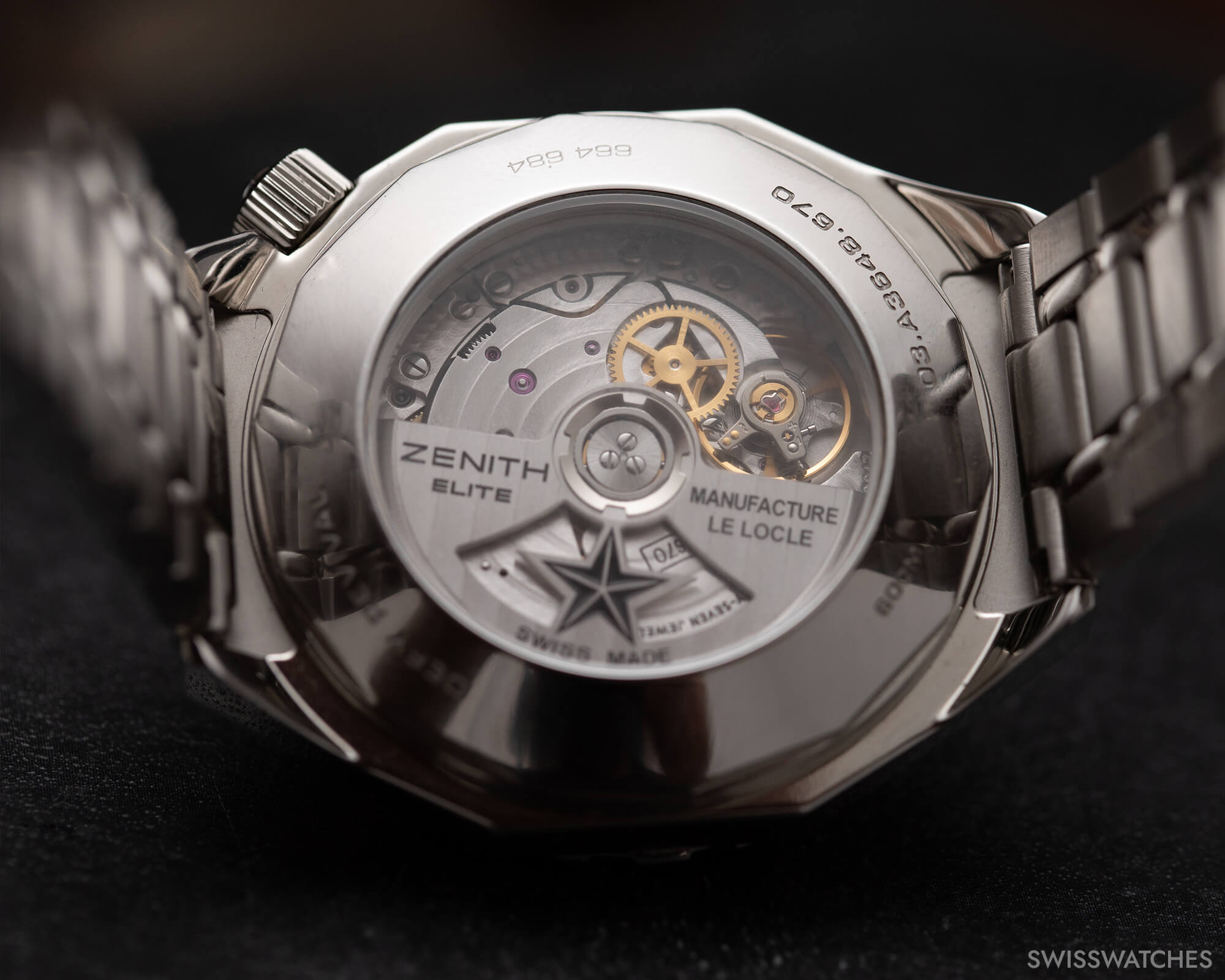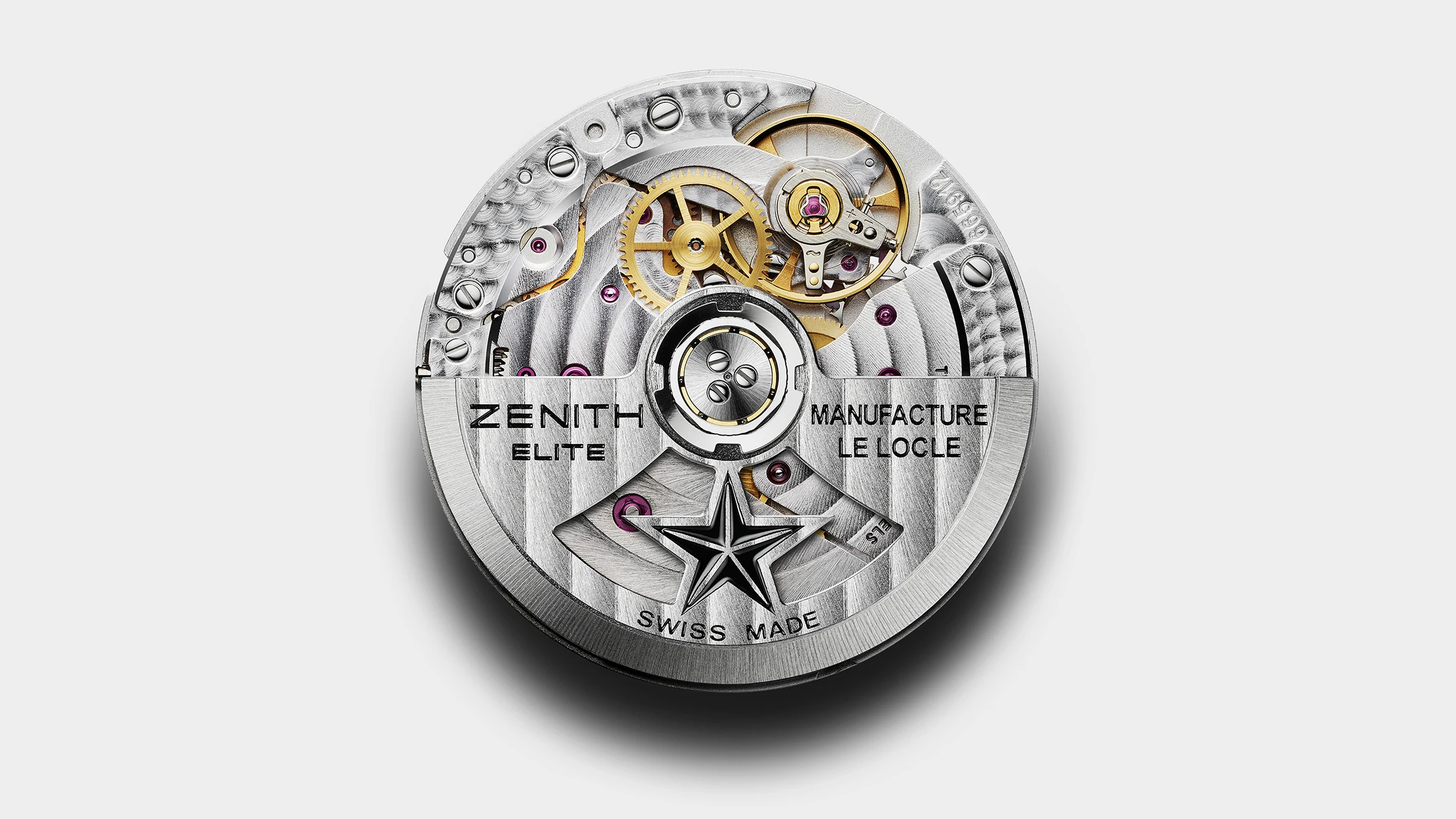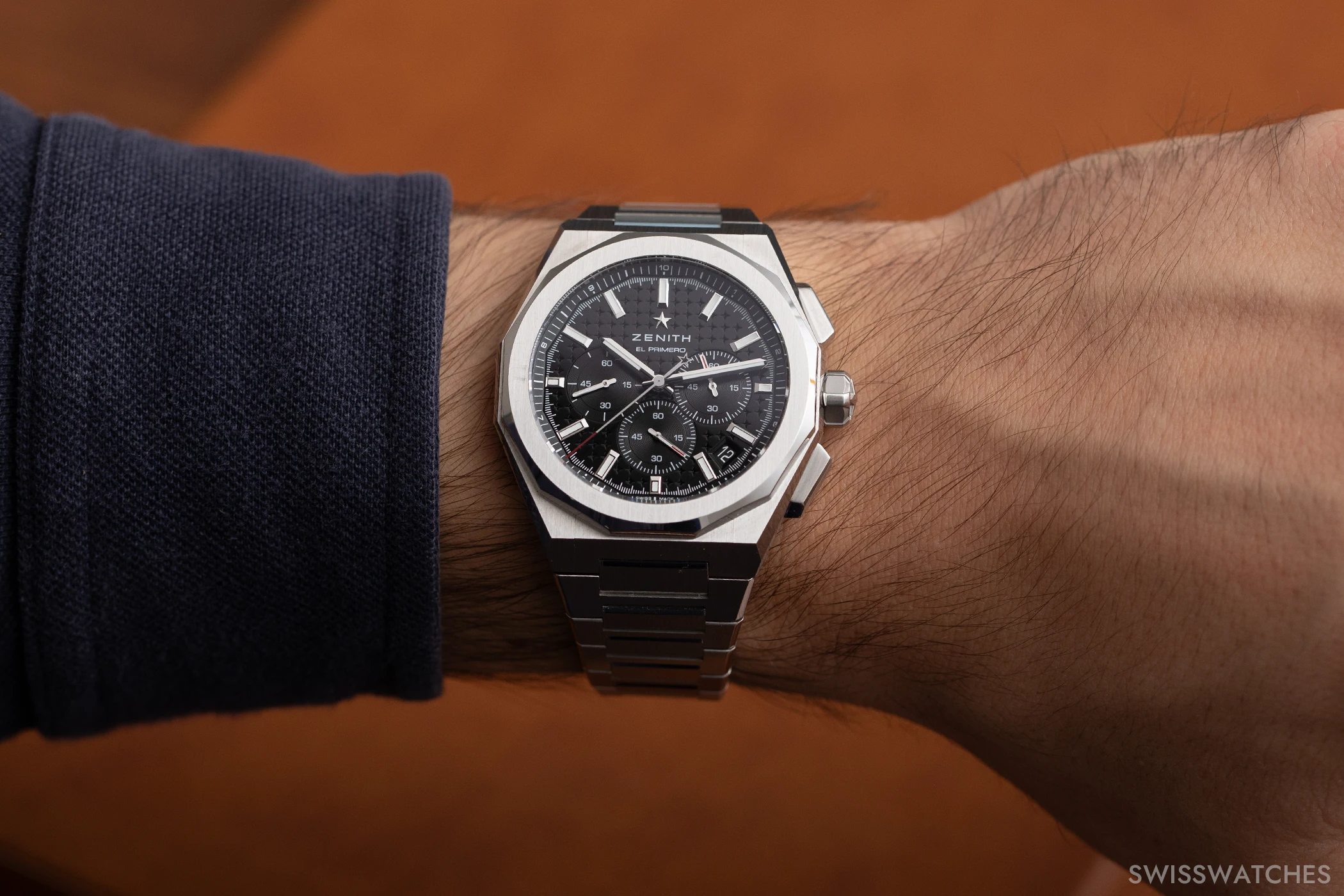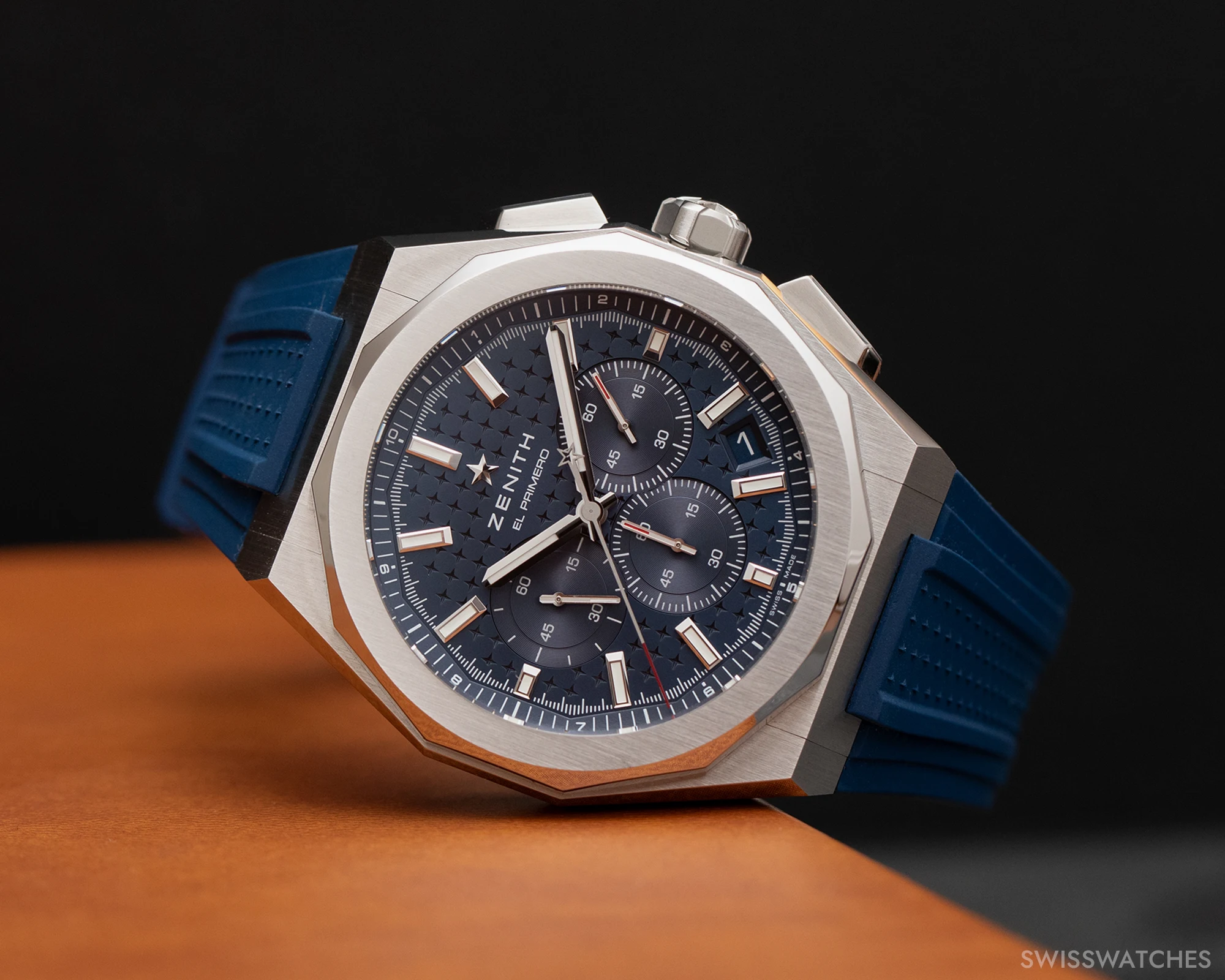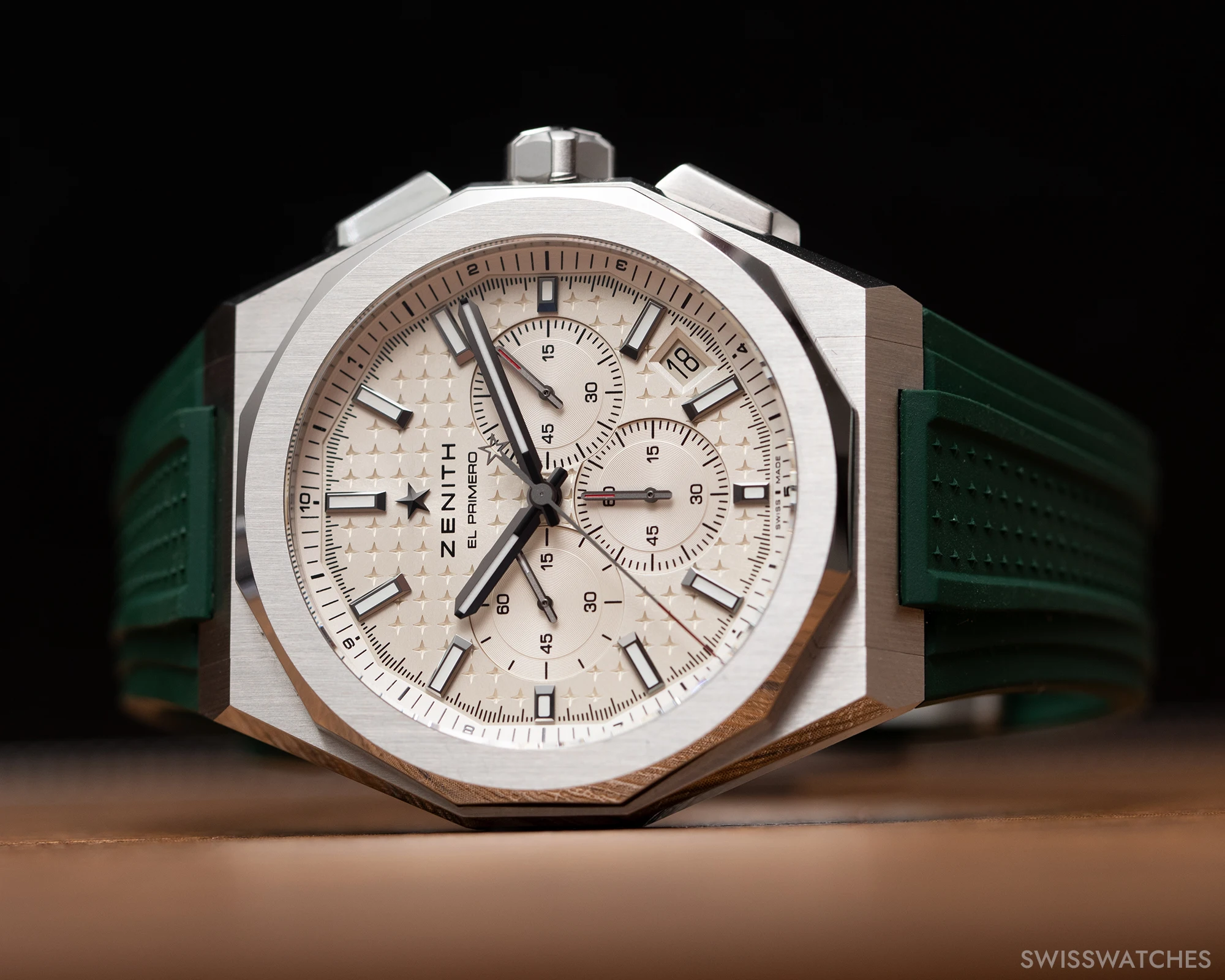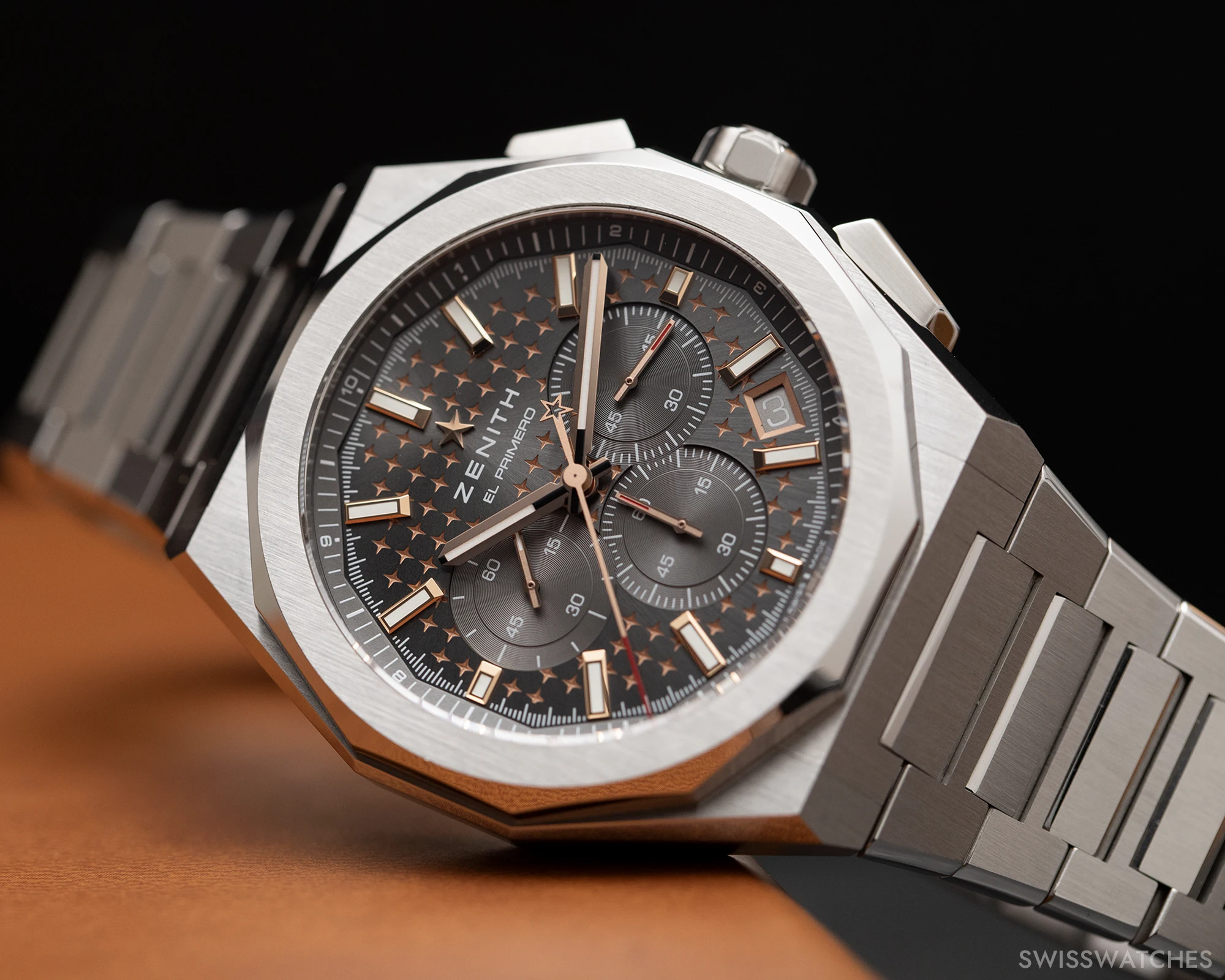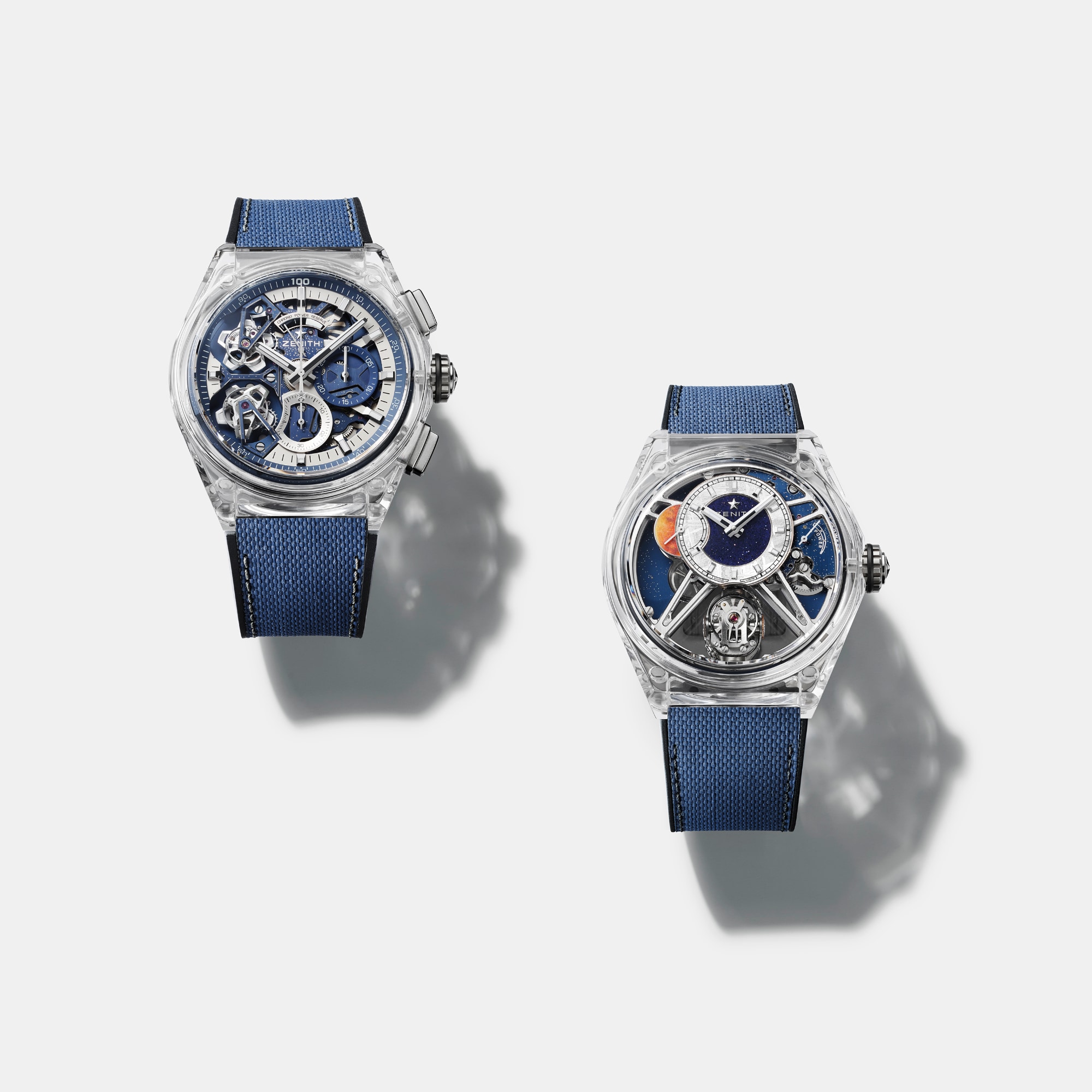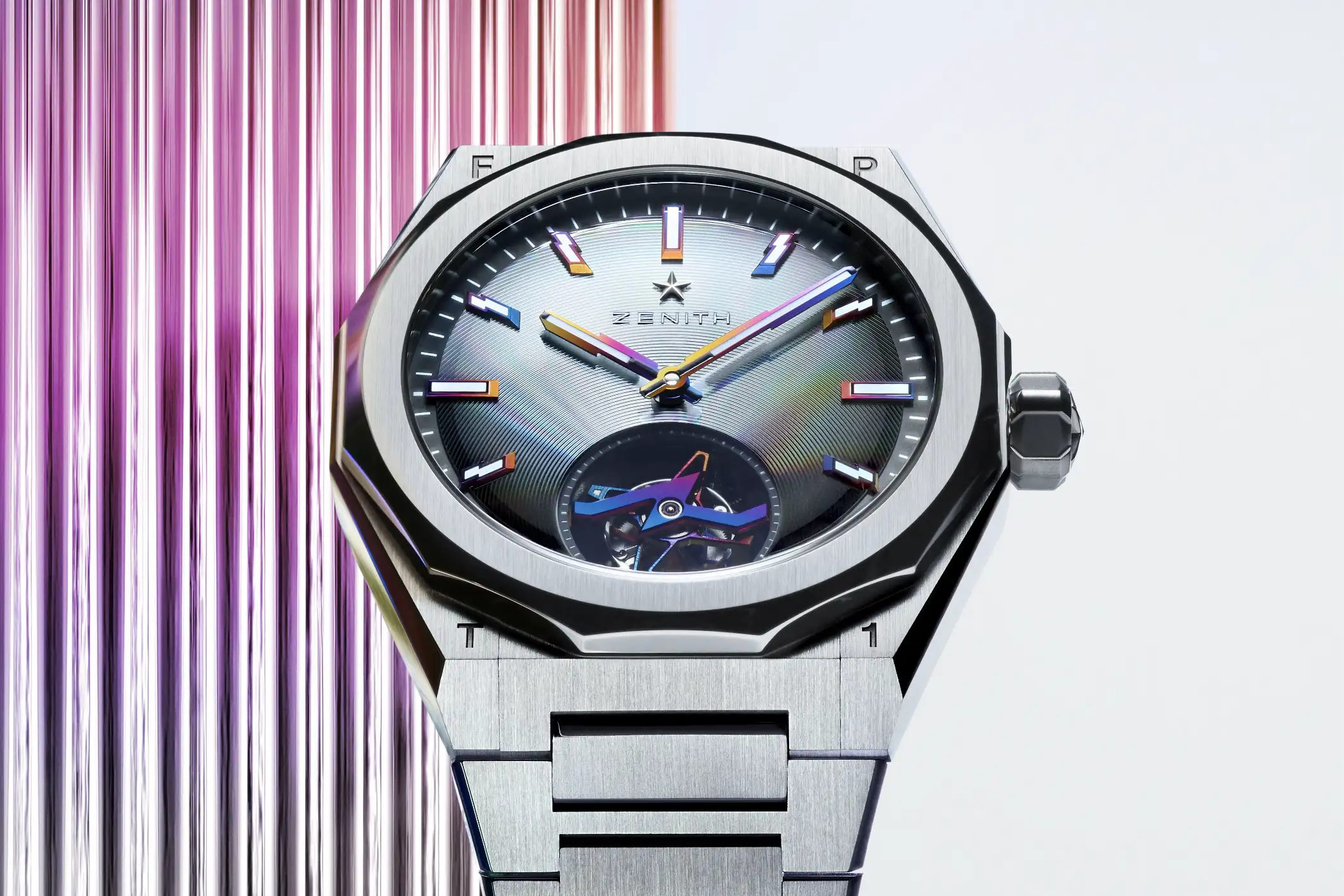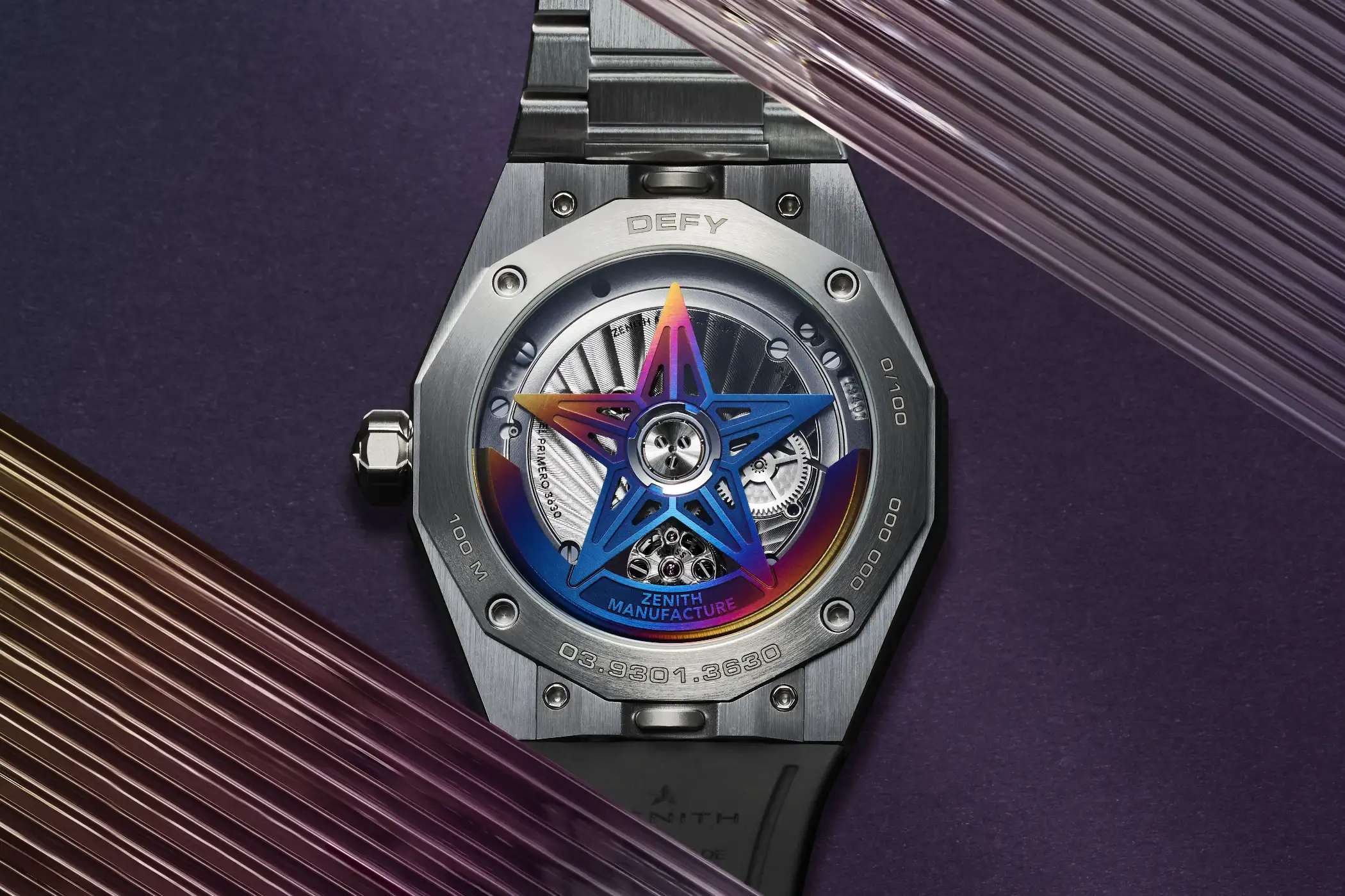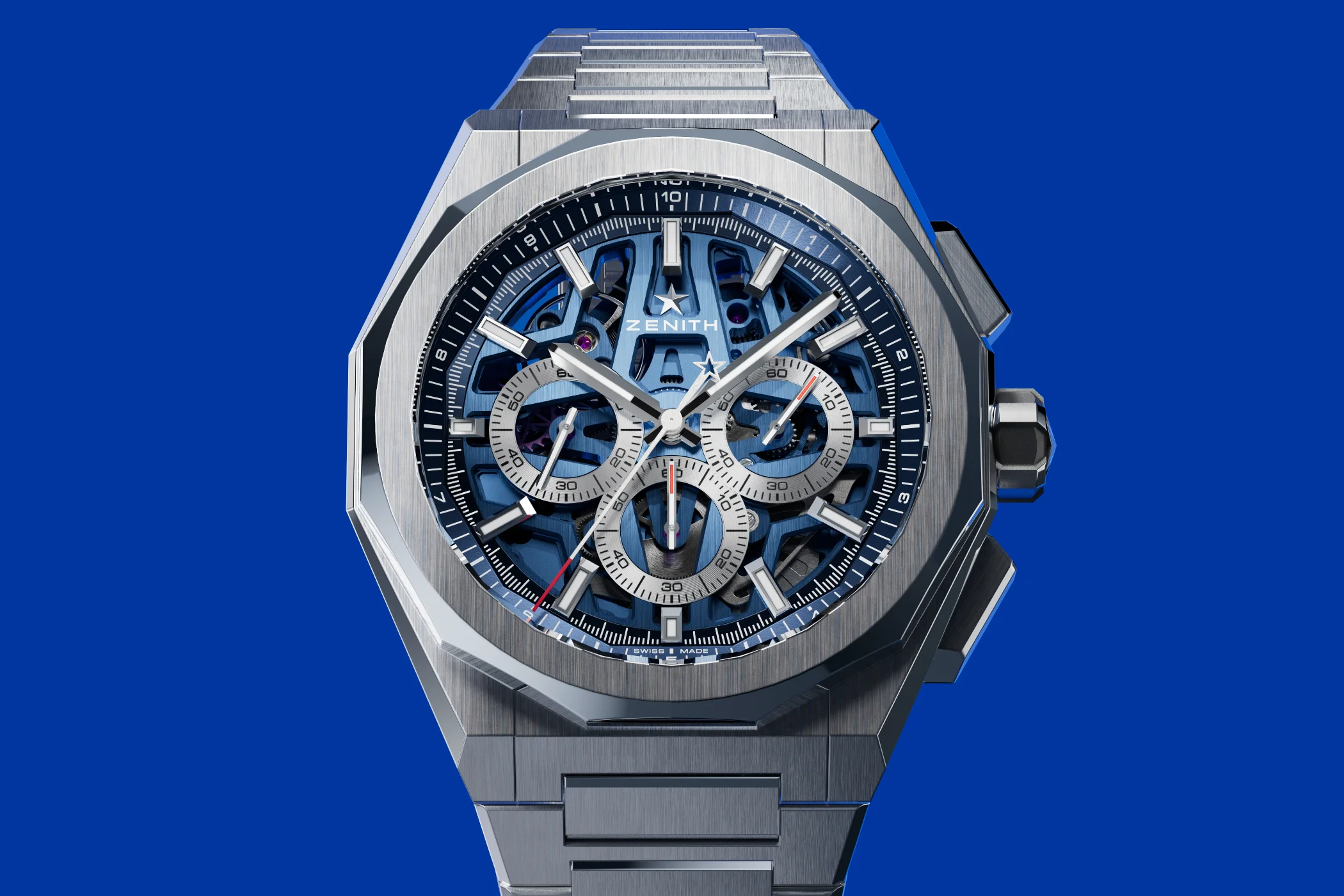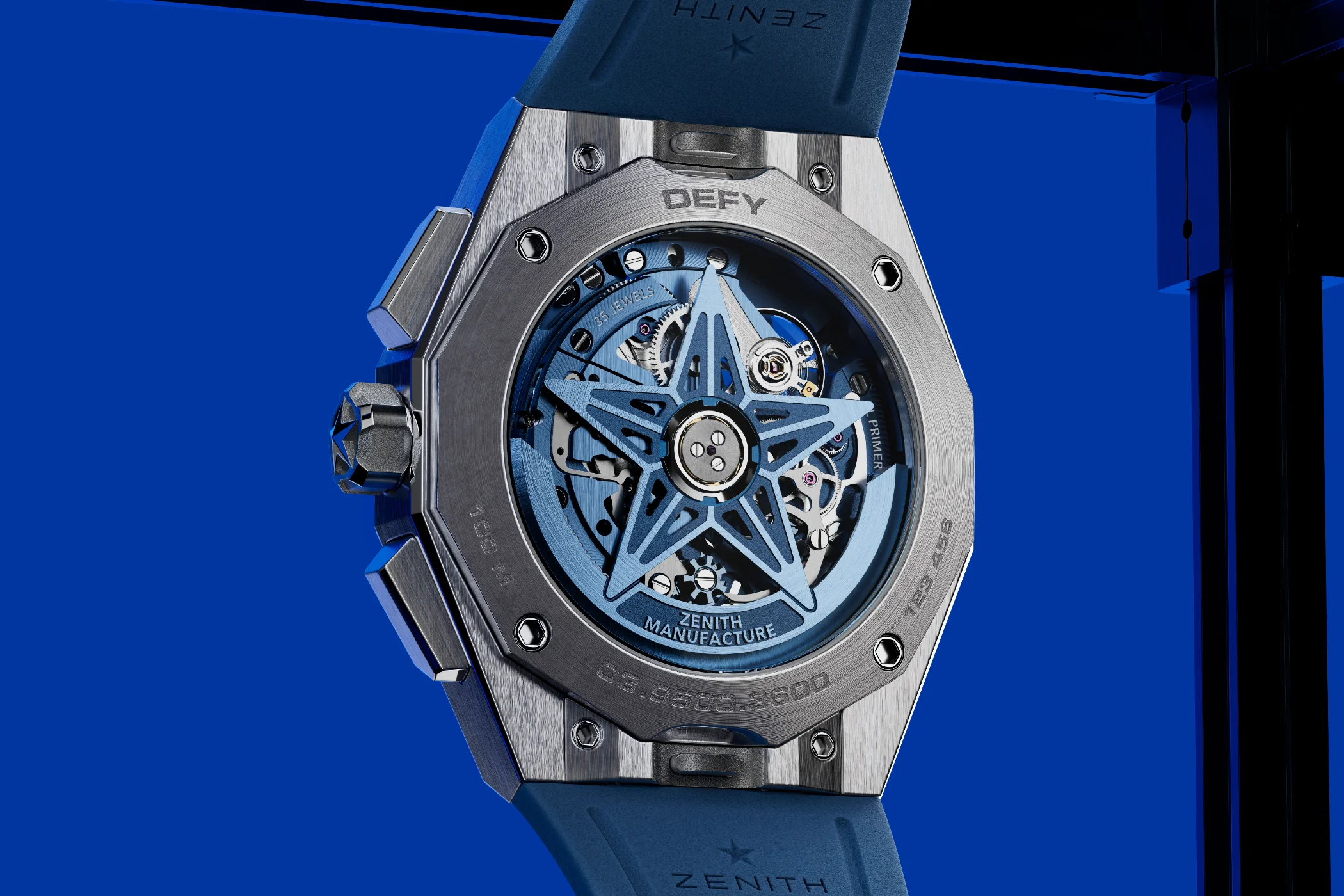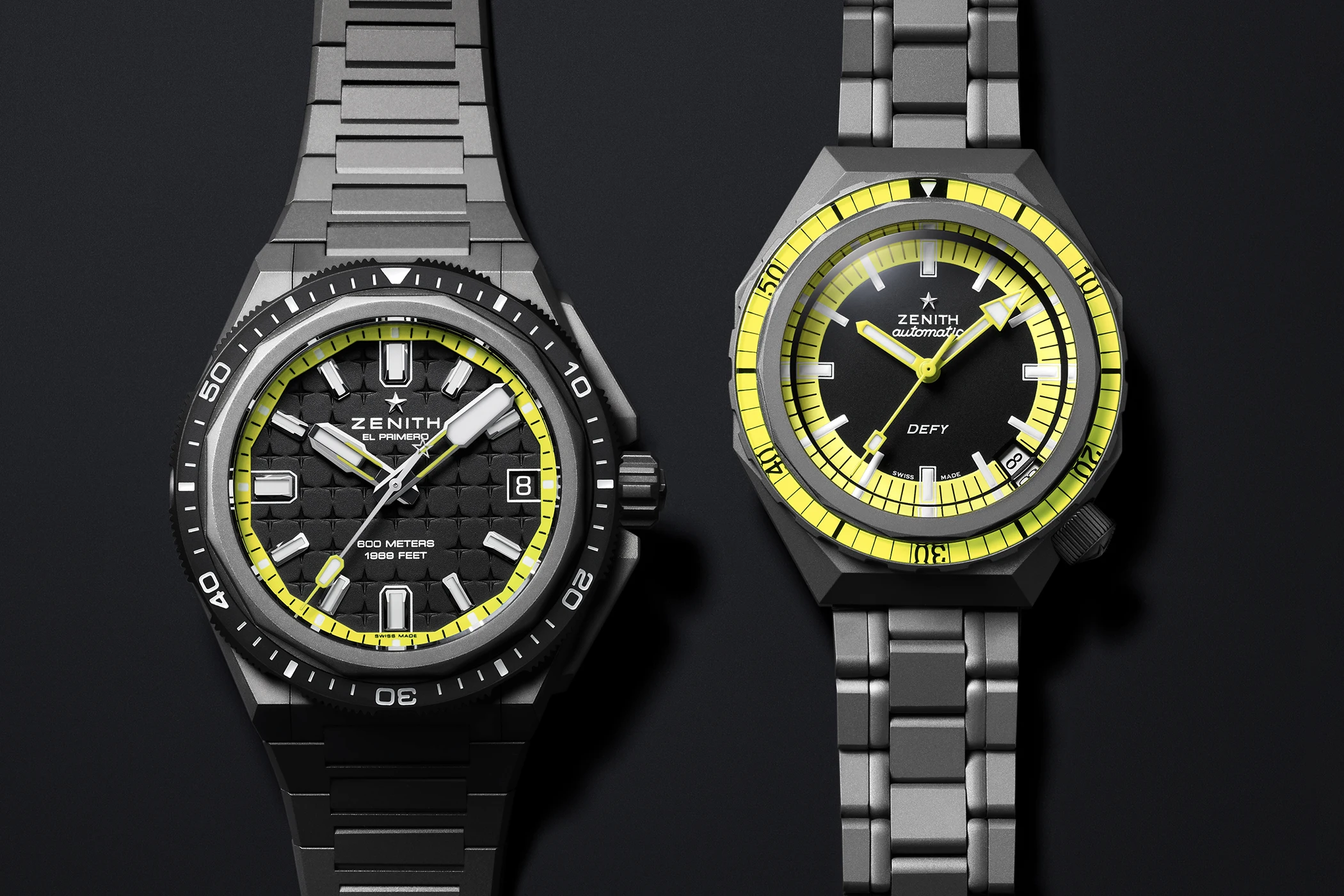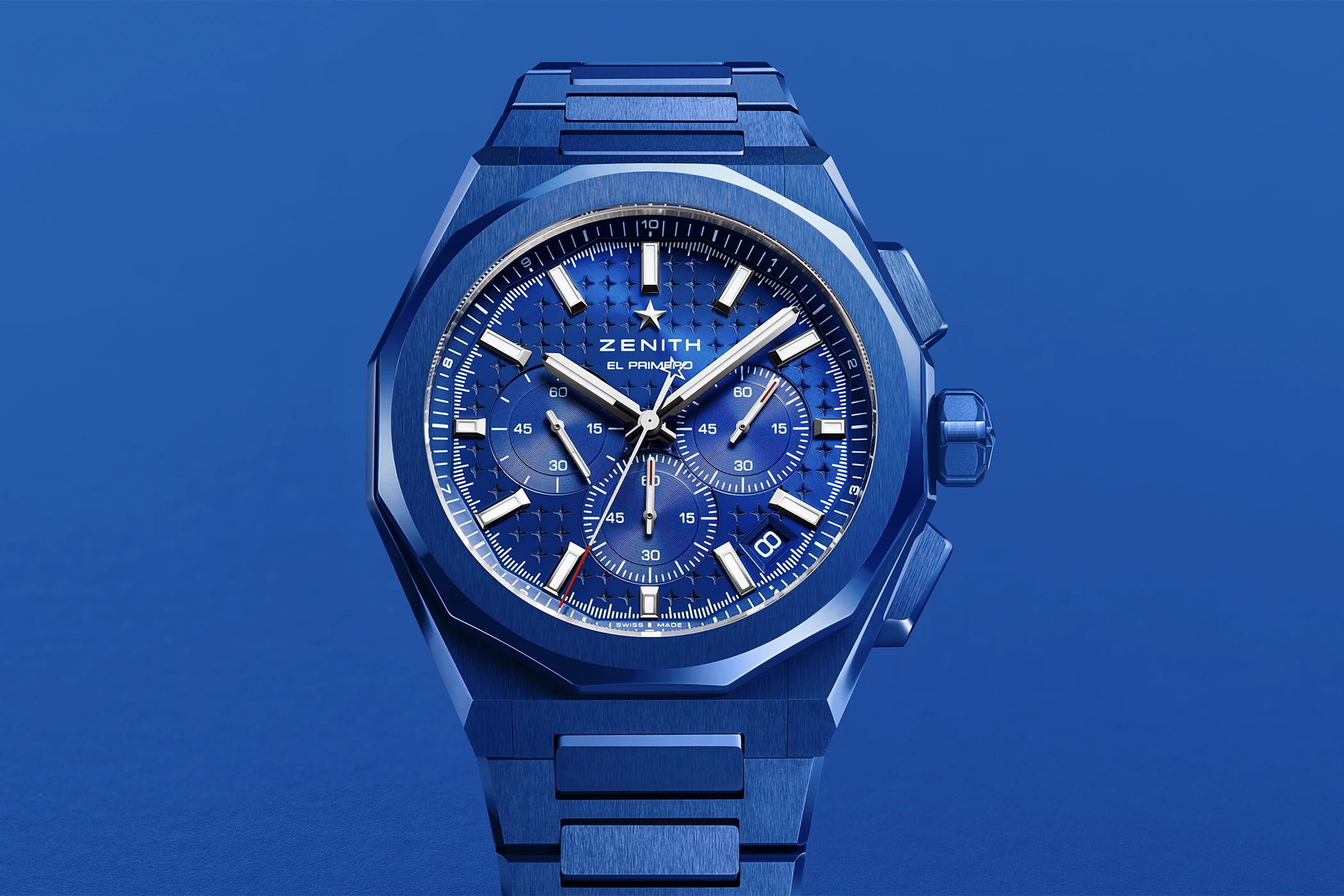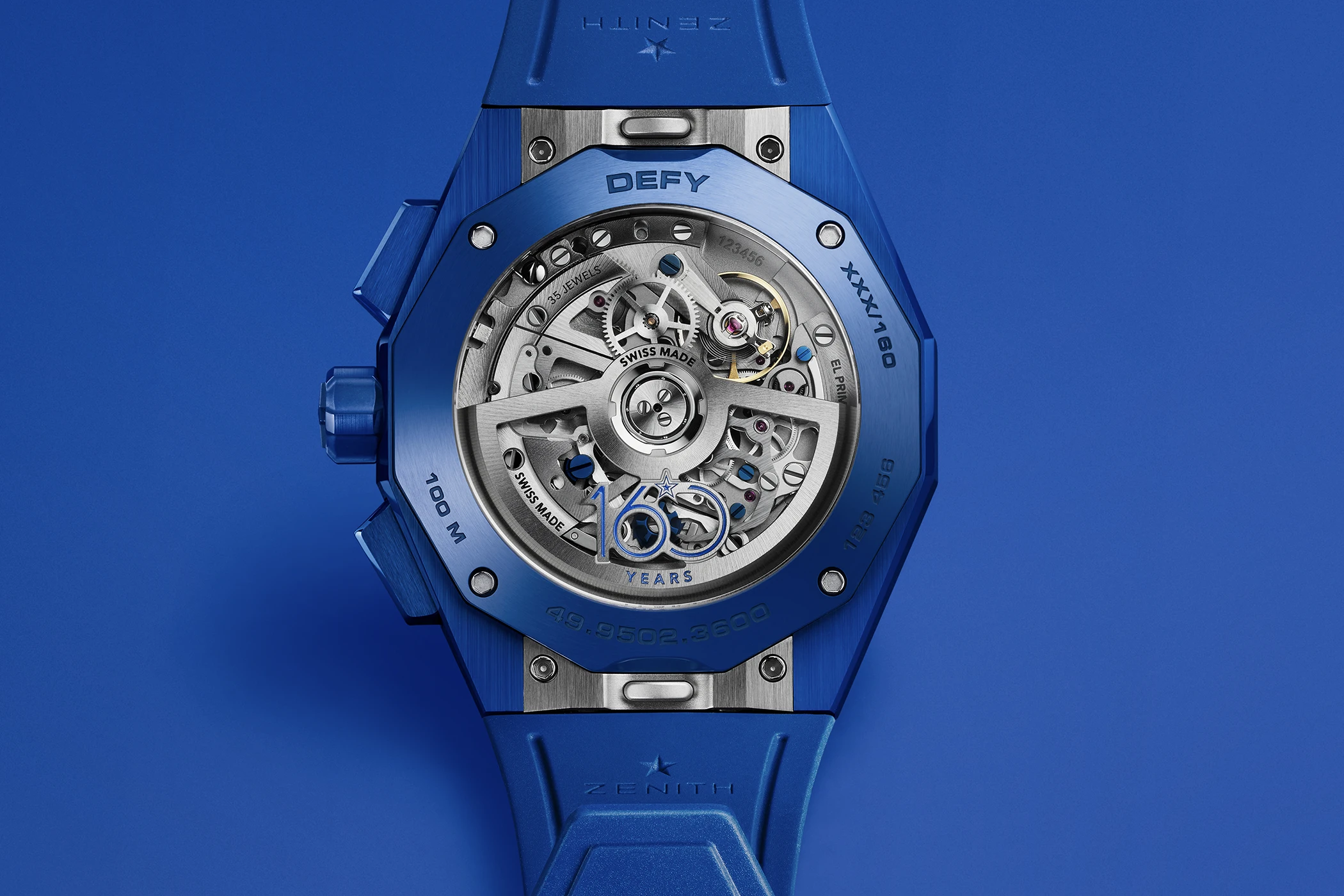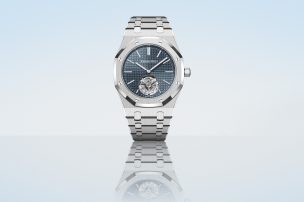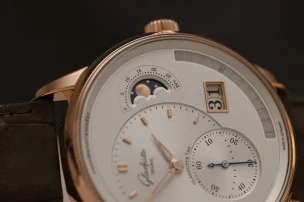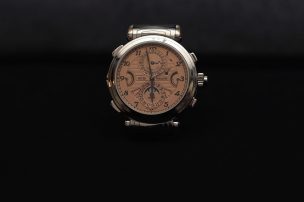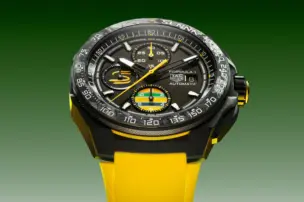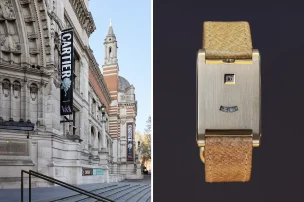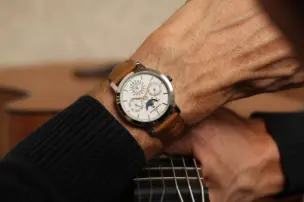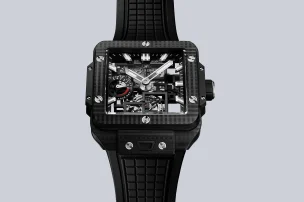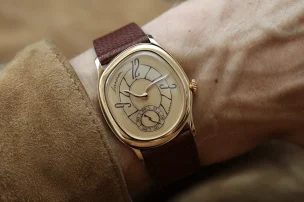
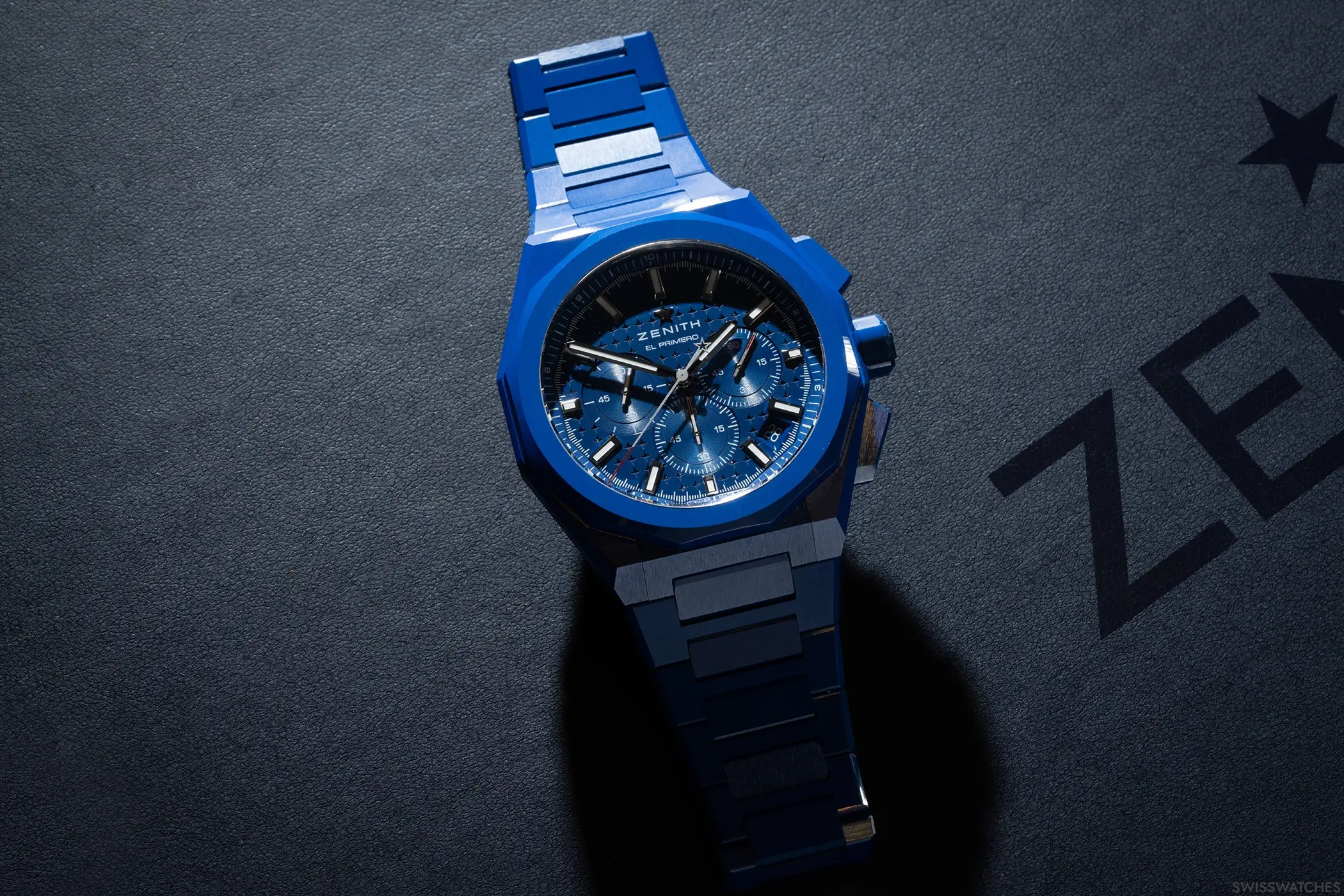
160 Years of Zenith – Time for the Defy Skyline Chronograph Anniversary Edition
The original Defy was launched in 1969. This striking model was to have a decisive influence on the history of the Le Locle-based manufacturer, which is celebrating its 160th anniversary this year. Reason enough to take a closer look at the factors behind the collection’s success and its most popular models.
Although the launch of the first automatic, integrated high-frequency chronograph calibre – the legendary El Primero – in 1969 was a unique milestone for Zenith, another significant debut from that year should not be overlooked. The Defy also made its first appearance in the watch world in 1969 and today ranks among the brand’s core collections.
Defy’s future shines bright
Zenith CEO Benoît de Clerck knows why this will remain the case in the future:
‘Since its bold debut in 1969, the Defy line has represented the most innovative and uncompromising side of Zenith, challenging traditional rules in design and watchmaking. What makes Defy so special is its ability to evolve with the times while remaining true to its original spirit. Defy is more than a collection, it is a state of mind. One that continues to resonate with a new generation of watch enthusiasts who value substance and vision.’
And so, naturally, a Defy is part of the three-piece Blue Ceramic Chronograph Trilogy – 160th Anniversary Edition with ceramic cases and bracelets. And thanks to the new Zenith blue, these are real eye-catchers. The brand gifted itself this bold colour for its birthday. Having been especially developed for the three anniversary models, the hue now also is the brand’s new corporate identity colour.
Zenith, the sky and the stars
But not simply because blue is a beautiful and extremely popular colour. Rather, it represents the infinite vastness of the sky. It was a gaze into its nocturnal realms that is said to have inspired the brand’s founder, Georges Favre-Jacot, to choose the name Zenith. The word ‘zenith’ refers to the highest point a celestial body reaches in the sky and, for Favre-Jacot, symbolised the absolute excellence that he aimed for with his company. And since the night sky also includes countless stars, these also play a defining role in the design DNA of the manufacturer: as a dial pattern and model for the star-shaped rotor of the Defy collection.
‘Blue has always been a key element of Zenith’s identity. The colour represents our connection to the sky and the pioneering spirit that has driven us for 160 years,’ comments Benoît de Clerck.
The Defy by Zenith – a success story with highs and lows
Given the current and enduring success of the Defy, it is surprising that the first two models in this line from 1969 – the A3642 and the A3648 – were not exactly shooting stars. This was probably due to the avant-garde design with an octagonal case and 14-sided bezel, which was ahead of its time. The latter was rotatable on both sides, although the two angular models, with a remarkable depth rating of 30 and 60 bar respectively for the time, were genuine diver’s watches. However, the corresponding ISO standard 6425, which specifies a unidirectional rotating bezel, would not come into effect until many years later.
In the late 1960s, striking sports watches made of steel with an industrial-inspired design were little more than a faint silver lining on the horizon. With the Defy, Zenith broke new ground. Later on, the sharp edges were somewhat softened, but the tool-watch aesthetic remained — aside from a brief excursion into more extravagant realms — intact to this day. And history has shown: quality, craftsmanship, and iconic design always prevail. The same holds true for the Defy. In fact, it has lived up to its name in every sense. ‘Defy’ means to resist or to challenge — and the visionary Zenith founder Georges Favre-Jacot had already patented the term ‘Defi’ back in 1902, at the time for robust and precise pocket watches. In 1969, the English spelling ‘Defy’ was adopted.
From ‘coffre-fort’ to modern icon
The robust construction of the case and bezel, combined with precision, quickly earned the very first Defy models the nickname ‘coffre-fort’, the French term for safe or vault. The Defy A3642 and Defy A3648 (the latter also known as the Plongeur) protected the Manufacture calibre 2552PC, an automatic movement with a moderate frequency of three hertz. It was equipped with a patent-pending ring that protected the mechanical inner workings from severe impact.
In addition to these two models, there were other versions with black or silver dials in 1969 and the following year. A variant with a so-called domino bezel was also part of the early Defy club.
2006 – The comeback of the Defy
In the 1970s, the advent of quartz watches caused a crisis among manufacturers of mechanical timepieces, whose decline seemed imminent. The Defy proved that it lived up to its name during this period. It survived the quartz phase, albeit with some evolutionary changes and a metamorphosis into a battery-powered watch. In 1999, Zenith and TAG Heuer became part of the luxury goods group LVMH, to which the brand still belongs today and under whose umbrella it has developed into a significant manufacturer.
But first, things took an extravagant turn, including in the Defy collection. Thierry Nataf (CEO from 2001 to 2010) wanted to awaken Zenith, the ‘sleeping beauty’, from its slumber. Among other things, he did this with the Defy, which he promoted to an independent collection of sporty luxury watches in 2006. One of its hallmarks was the then unusual combination of gold with titanium, carbon, steel, and rubber.
These models initially enjoyed considerable success. However, it soon became apparent that their flamboyant designs lacked the substance needed to achieve iconic status. In 2010, Jean-Frédéric Dufour took over the helm. Now CEO of Rolex, he steered Zenith — and the Defy — back into calmer waters, returning to a bold, sporty aesthetic rooted in mechanical excellence and more accessible pricing. In doing so, Zenith re-established its place in the world of true watch connoisseurs.
In 2017, Dufour was succeeded by Julien Tornare. He finally put the Defy on the road to success with a completely redesigned collection.
Defy El Primero 21 from 2017 – the triumphant advance begins
The Defy El Primero 21, unveiled at Baselworld in 2017, marked the beginning of this remarkable success story. Thanks to the new high-frequency calibre 9004 with two independent oscillating and escapement systems, it became the world’s first serially produced high-frequency wristwatch capable of measuring time to 1/100th of a second automatically. The 50-hertz calibre, featuring a dedicated chronograph mechanism, was housed in a 44-millimetre case. Several versions were released, with the titanium and skeletonised dial variants proving the most popular among watch enthusiasts.
‘The success of this Defy was far greater than we had hoped and expected. As a result, this watch line became a mainstay of our business,’ Tornare recalled a few years later.
The next stage in the Defy‘s success story came in 2018 with the Defy Classic in titanium. The three-hand watch with date display was available in an open-worked version with a skeletonised dial or a closed version with an elegant sunburst dial. All models were powered by the in-house automatic calibre 670 SK with a 48-hour power reserve. Thanks to the sapphire crystal case back of the 41-millimetre case, the skeletonised and blackened movement with silicon anchor and escape wheel could also be admired in the version with a closed dial.
In 2020, Zenith also launched the Defy Classic Carbon, the brand’s first watch made entirely from carbon. Weighing just 65 grams and featuring an integrated bracelet, it offered exceptional comfort on the wrist.
2022 – The Defy Skyline emerges
Two years later, the Defy collection welcomed a major new addition with the launch of the Defy Skyline. Not only did it replace the Defy Classic, but its distinctive design also perfectly catered to the growing demand for sporty stainless steel watches with integrated bracelets. For the first time, the dial featured a geometric pattern of four-pointed stars — a modern reinterpretation of Zenith’s Double-Z logo from the 1960s. The first Skyline model was a three-hand watch with date, water-resistant to 10 bar, and equipped with the then-new El Primero 3620. This automatic calibre operates at a brisk five hertz, enabling the 1/10th-of-a-second display at 9 o’clock.
2024 saw the arrival of the long-awaited Defy Skyline Chronograph, featuring the same strikingly faceted case, water-resistant to 10 bar, as the three-hand version. However, the diameter was slightly increased to 42 millimetres. This model is also powered by an El Primero movement, in this case the automatic calibre 3600, which delivers high-speed performance, enabling chronograph measurements accurate to 1/10th of a second via a complete rotation of the central chronograph hand every ten seconds. All Defy Skyline models come with an integrated stainless steel bracelet fwith a satin-brushed finish and polished edges. Alternatively, a colour-coordinated rubber strap with a star pattern is included. Thanks to the quick-change system, replacement is quick and easy without the need for tools.
2024 – A Design Story Repeats Itself
Zenith continues to draw successfully on the rich heritage of the Defy. In doing so, the brand quietly reinforces the fact that this timepiece had the makings of a timeless icon from the very beginning – despite all odds. The two modern reinterpretations of the original 1969 Defy A3648, unveiled at Watches & Wonders 2024, attracted considerable attention and excitement. Both the Defy Extreme Diver and the Defy Revival A3648 are, like their historical predecessor, water-resistant to 60 bar – the equivalent of 600 metres, or 1,969 feet: a subtle nod to the year the Defy was born.
They comply with the diver’s watch standard, which did not yet exist at the time, and therefore have bezels that can only be adjusted in one direction. Furthermore, they comply with the requirements of ISO 764 for paramagnetism and ISO 1413 for shock resistance, allow a view of the driving inner workings through a sapphire crystal case back, and offer excellent readability even in poor lighting conditions thanks to Superluminova.
But there are also clear differences. The Defy Revival A3648, for instance, stays visually true to its 1969 source of inspiration. It is powered by the Elite 670 calibre, visible through the sapphire crystal caseback, offering a power reserve of 50 hours. The Defy Extreme Diver A3642, on the other hand, is a true reinterpretation. It features a 42.5-millimetre titanium case with a twelve-sided bezel – four sides more than the original – and is equipped with a helium escape valve for saturation diving. The bright orange accents on the bezel and minute track pay homage to vintage Defy dive models. Precision is ensured by the automatic, high-frequency in-house calibre El Primero 3620-SC, offering a power reserve of 60 hours.
2024 – Defy Skyline Chronograph
One of the highlights among the new Defy models for 2024 is undoubtedly the Skyline Chronograph with the 5-hertz high-frequency El Primero 3600 calibre and its famous stopwatch accuracy to the nearest tenth of a second. The altitude ring with the 1/10-second scale has twelve facets. It follows the contours of the dodecagonal bezel and serves as a continuation of the hour indices. A view through the sapphire crystal case back of the 42-millimetre stainless steel case, which is water-resistant to 10 bar, reveals the star-shaped oscillating weight with bidirectional winding, which provides a generous power reserve of 60 hours.
The robust functionality and striking case design of this exclusive boutique edition are complemented by an elegant dial with a metallic finish in contrasting slate grey and gold tones. Added to this is the unlimited all-time favourite combination of stainless steel with a blue dial. Both are adorned with the skyline’s signature engraved starry sky pattern.
The Defy of today: modern and striking
Today, the Defy collection includes the Defy Skyline, Defy Extreme, Defy Revival and Defy Zero G lines. Designed for men and women, the current range is characterised by its state-of-the-art manufacture calibres and striking shapes, as well as its eponymous resilience. There is a choice of three-hand models, skeletonised versions, chronographs and tourbillons in various sizes. In addition, there is an extensive range of materials, from stainless steel to titanium, carbon, gold, platinum and ceramic. The selection is rounded off by numerous special editions such as the colourful Defy Felipe Pantone. Today’s Defys are equipped with either an Elite movement or the legendary El Primero.
2025 – New Releases with Guaranteed Clarity and Eye-Catching Appeal
In its 160th anniversary year, the Swiss manufacturer is naturally presenting further exciting Defy novelties. The skeletonised version of the Defy Skyline chronograph from 2024 underlines the technical character of the line. The dial, available in blue and black, has been opened up with geometric cut-outs inspired by Zenith’s double Z logo, and the date window has been omitted.
Two other new releases this year draw inspiration from the Defy models that debuted in 1969. Zenith refers to these new versions of the Defy Extreme Diver and Defy Revival as the Shadow Editions. They differ from the 2024 models in their use of titanium and the colour change from orange to yellow.
Defy Skyline Chronograph 160th Anniversary Edition
Of course, one Defy is a member of the Blue Ceramic Chronograph Trilogy – 160th Anniversary Edition. As the Defy Skyline Chronograph, it is clad in the blue ceramic mentioned at the beginning. The 42-millimetre case reveals the El Primero 3600 with 36,000 vibrations per hour and a tenth-of-a-second chronograph through the sapphire crystal caseback. The central chronograph seconds hand completes a full rotation in ten seconds – six times faster than a standard chronograph.
The radiant Zenith blue of the case, water-resistant to 10 bar, is echoed on the dial, whose engraved geometric motif is inspired by the brand’s four-pointed star. The hands and indices are coated with Superluminova for perfect readability at all times. Equipped with a user-friendly strap change system integrated into the case, the three-piece ceramic strap can be easily replaced with the supplied blue rubber strap with star pattern and stainless steel folding clasp at the touch of a button.
The Defy Skyline Chronograph 160th Anniversary Edition is now available for 24,800 euros.

